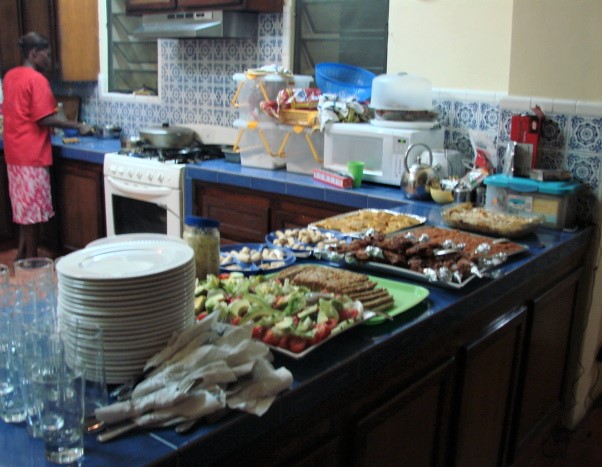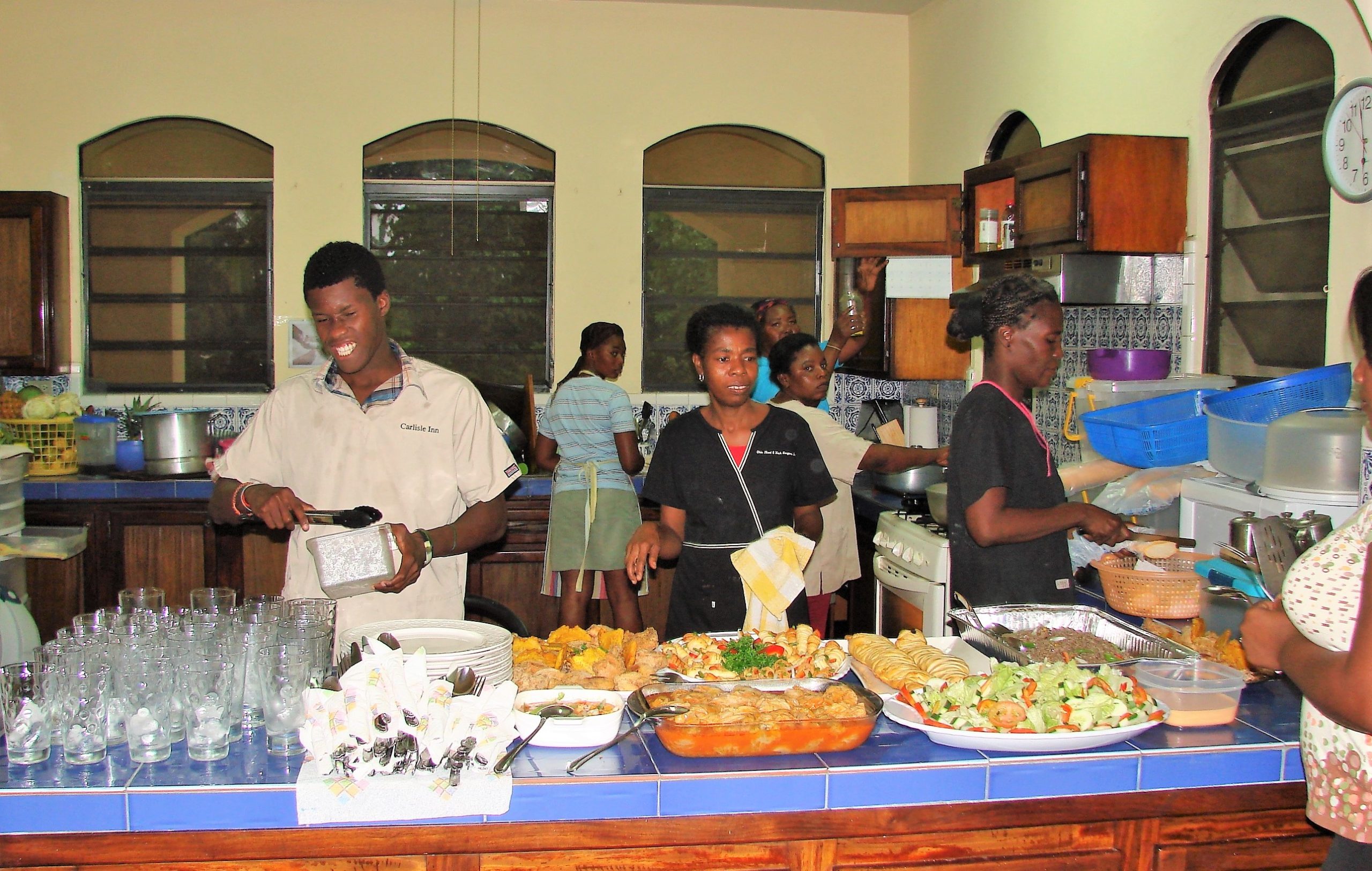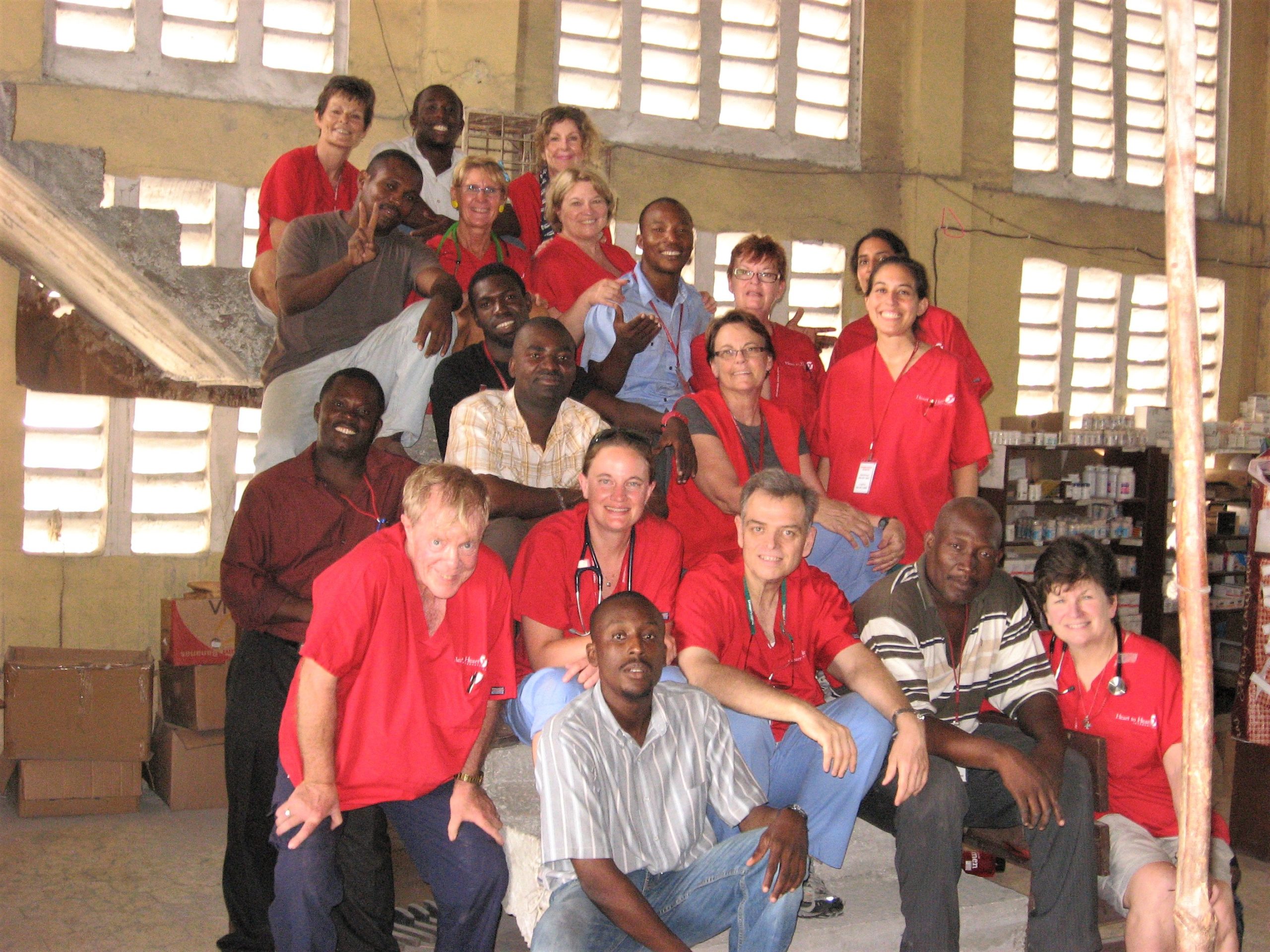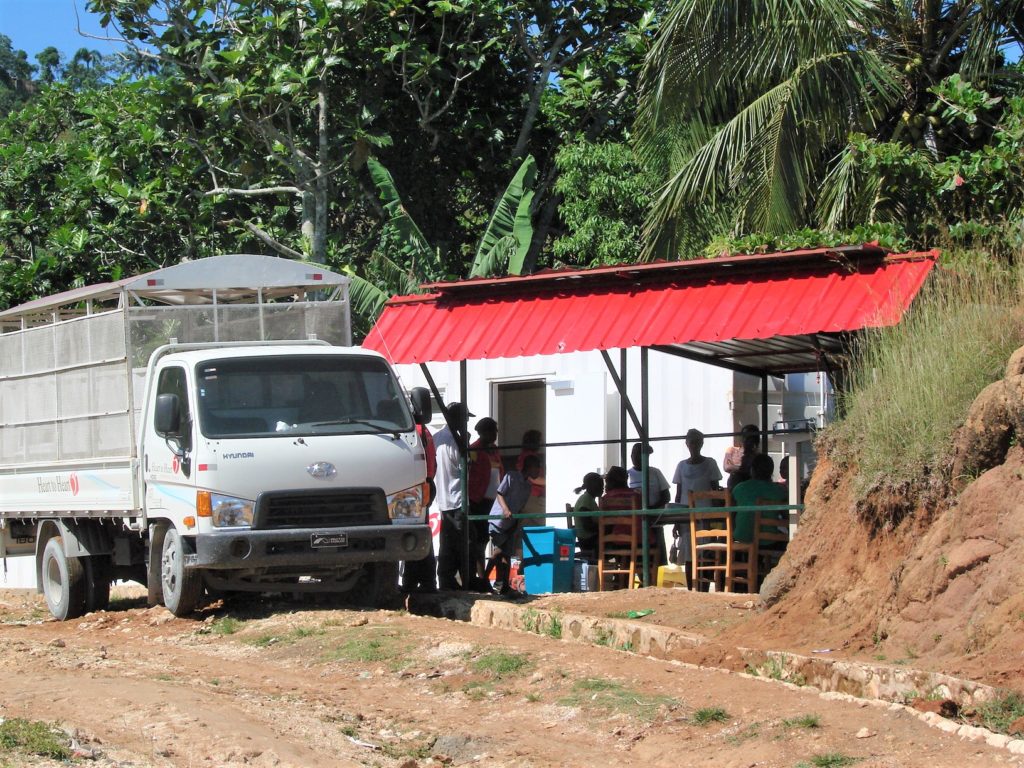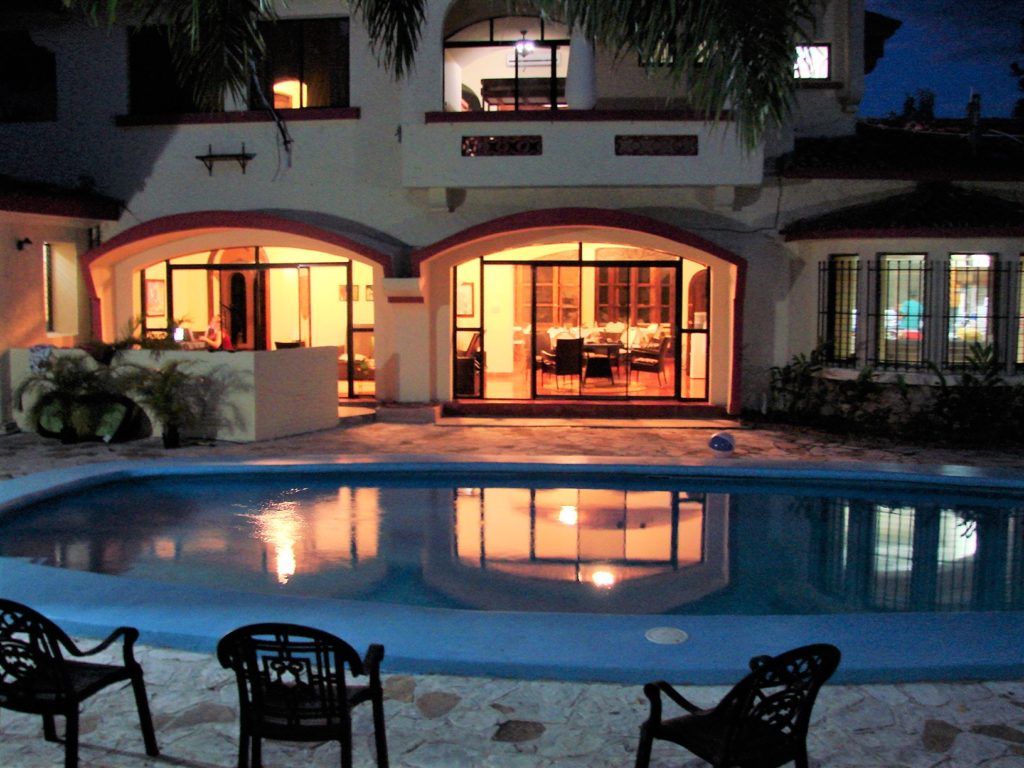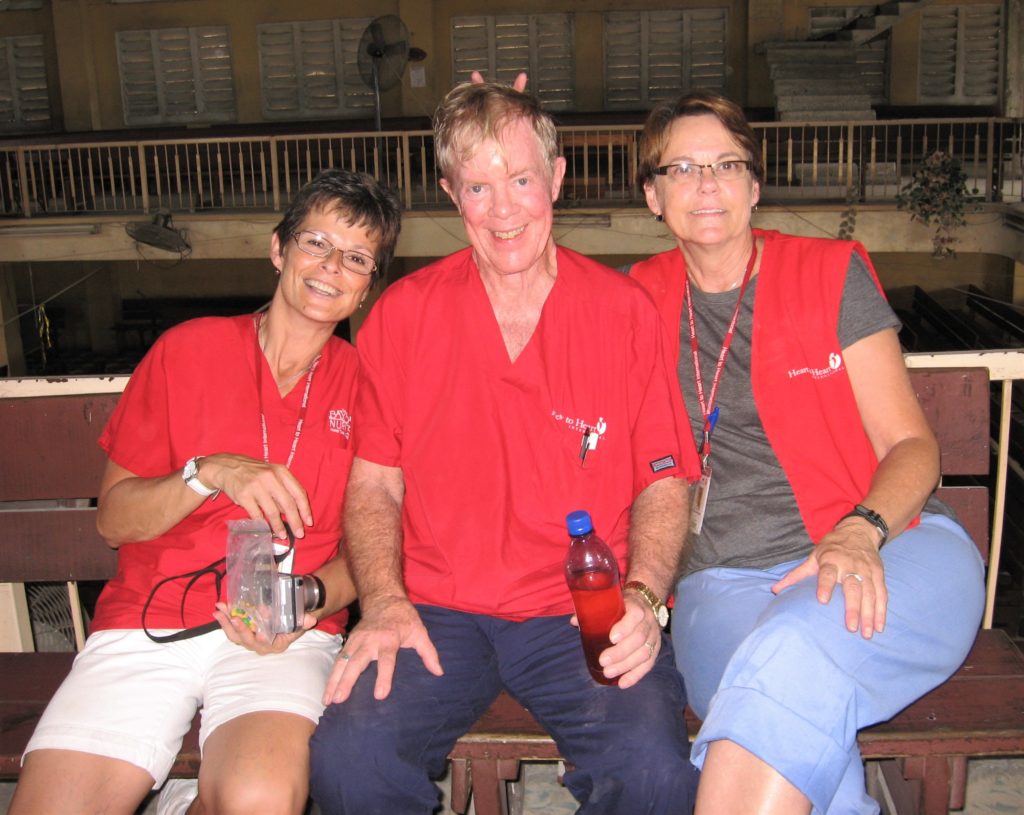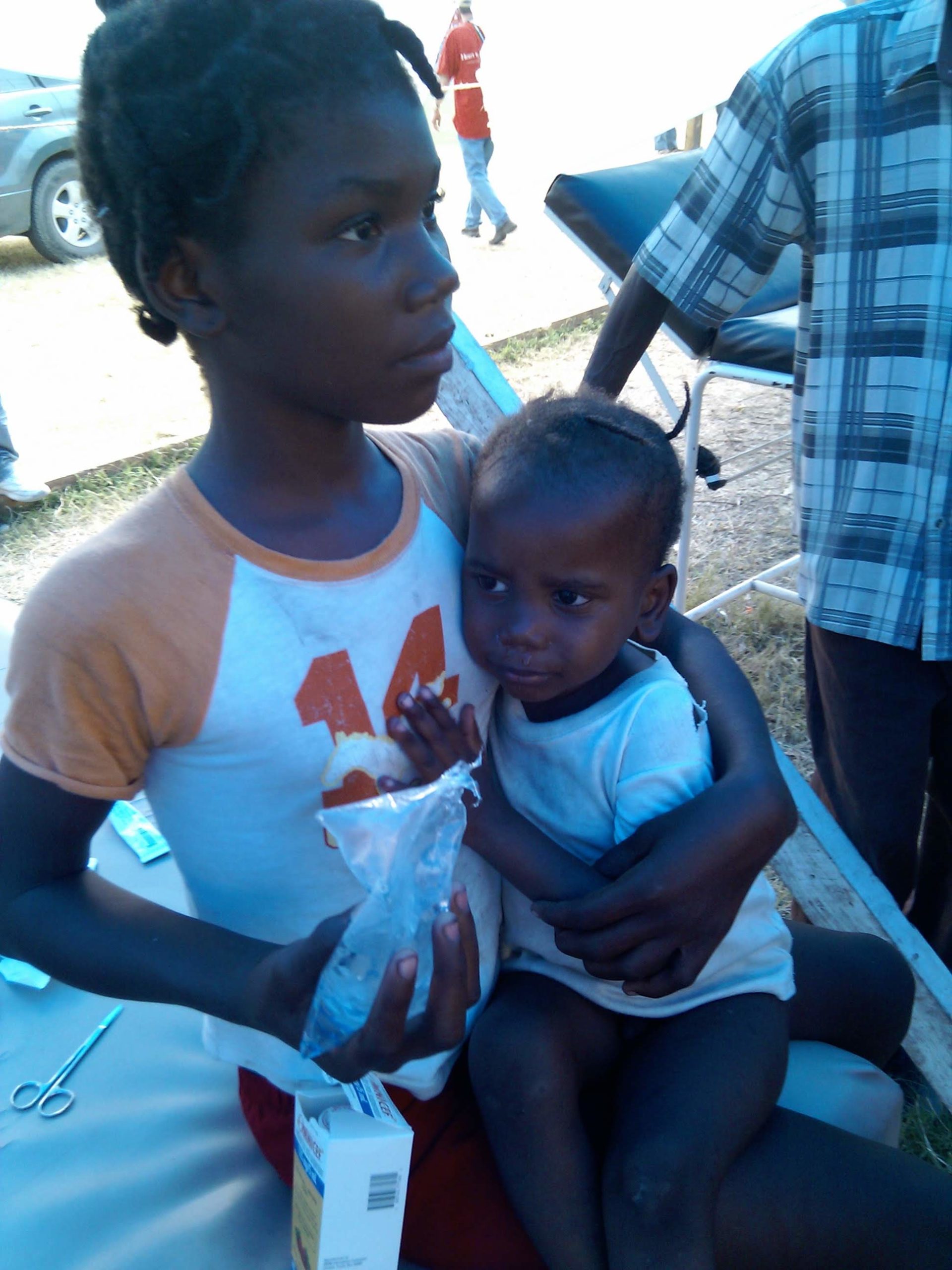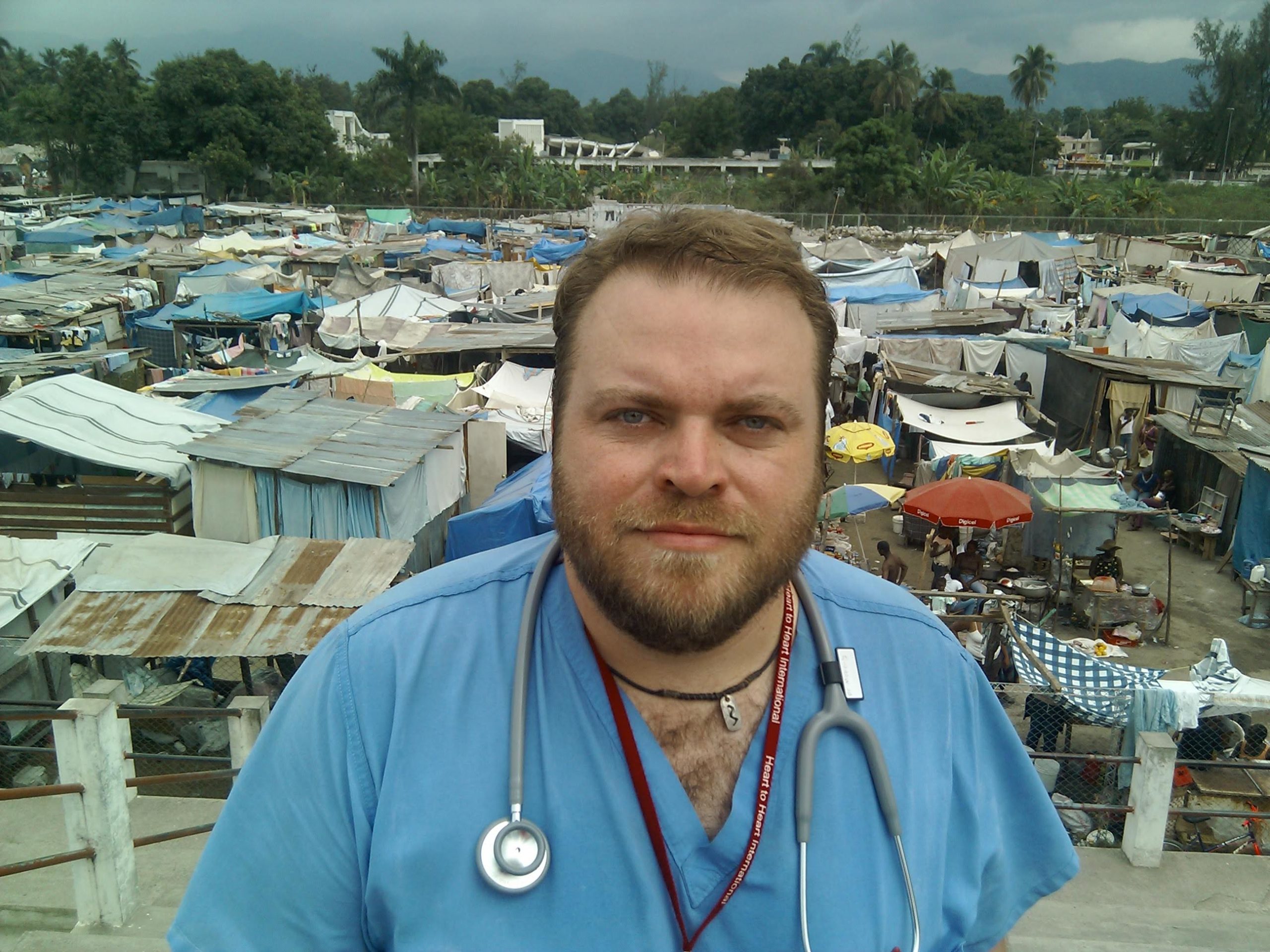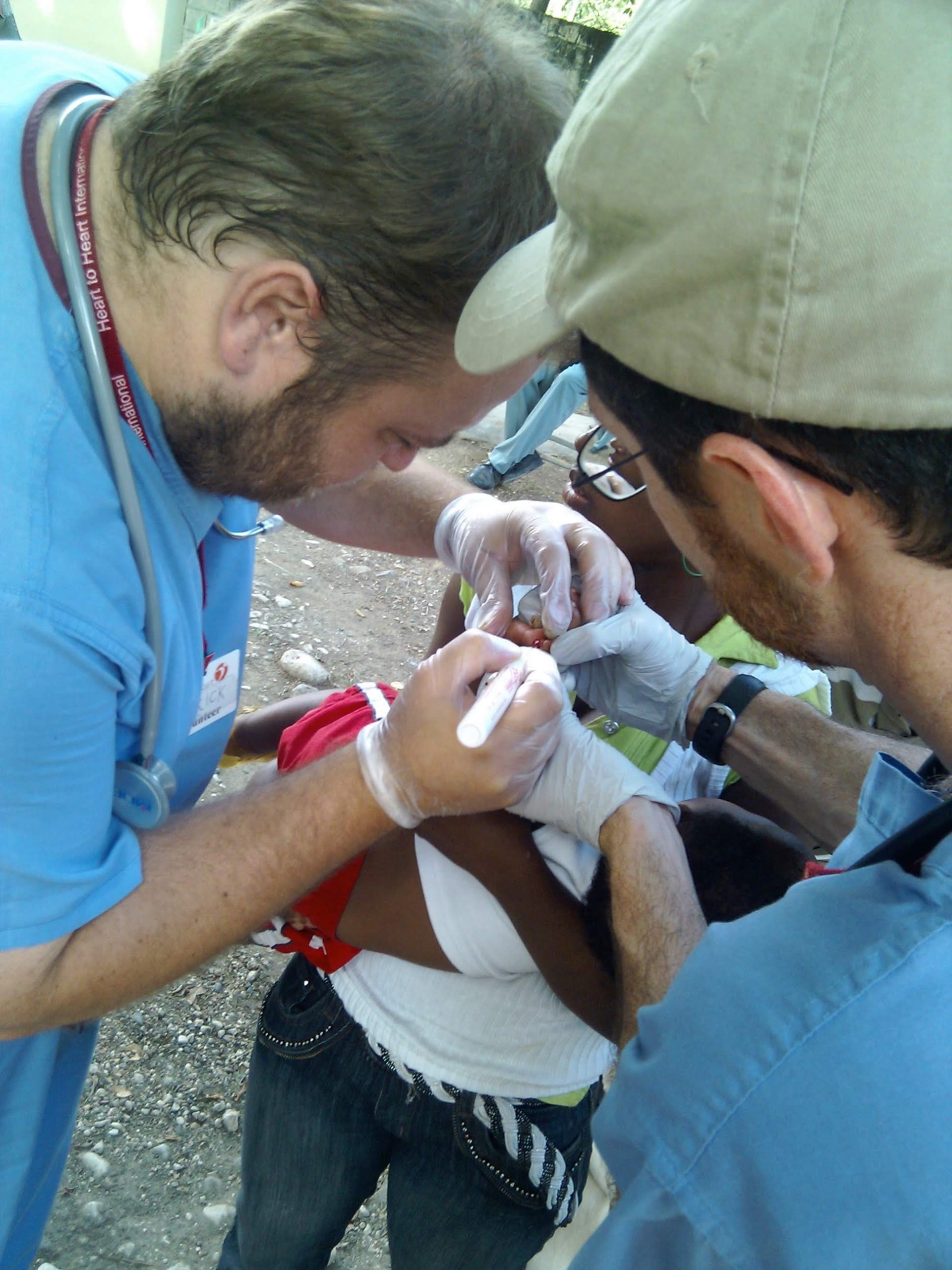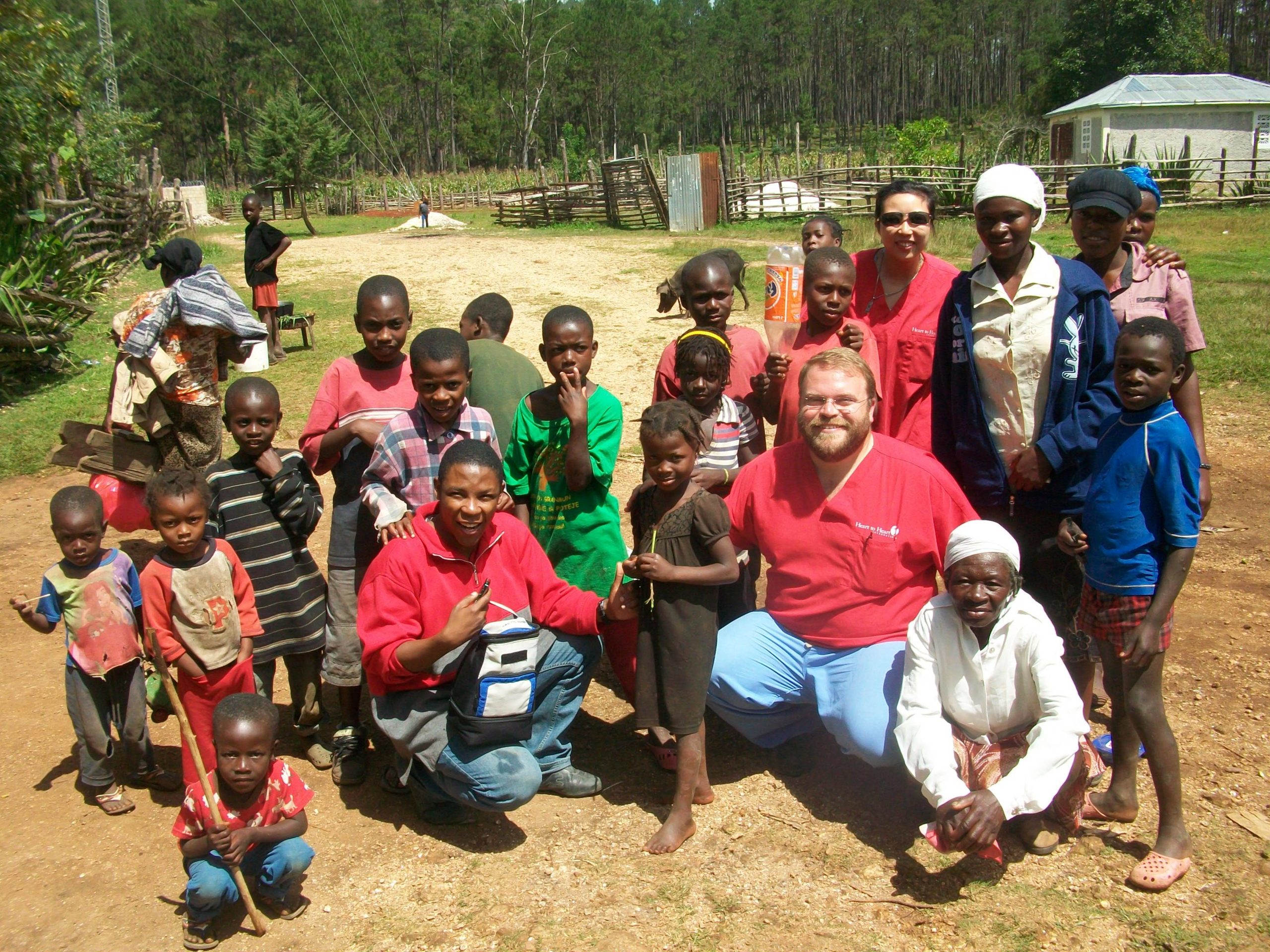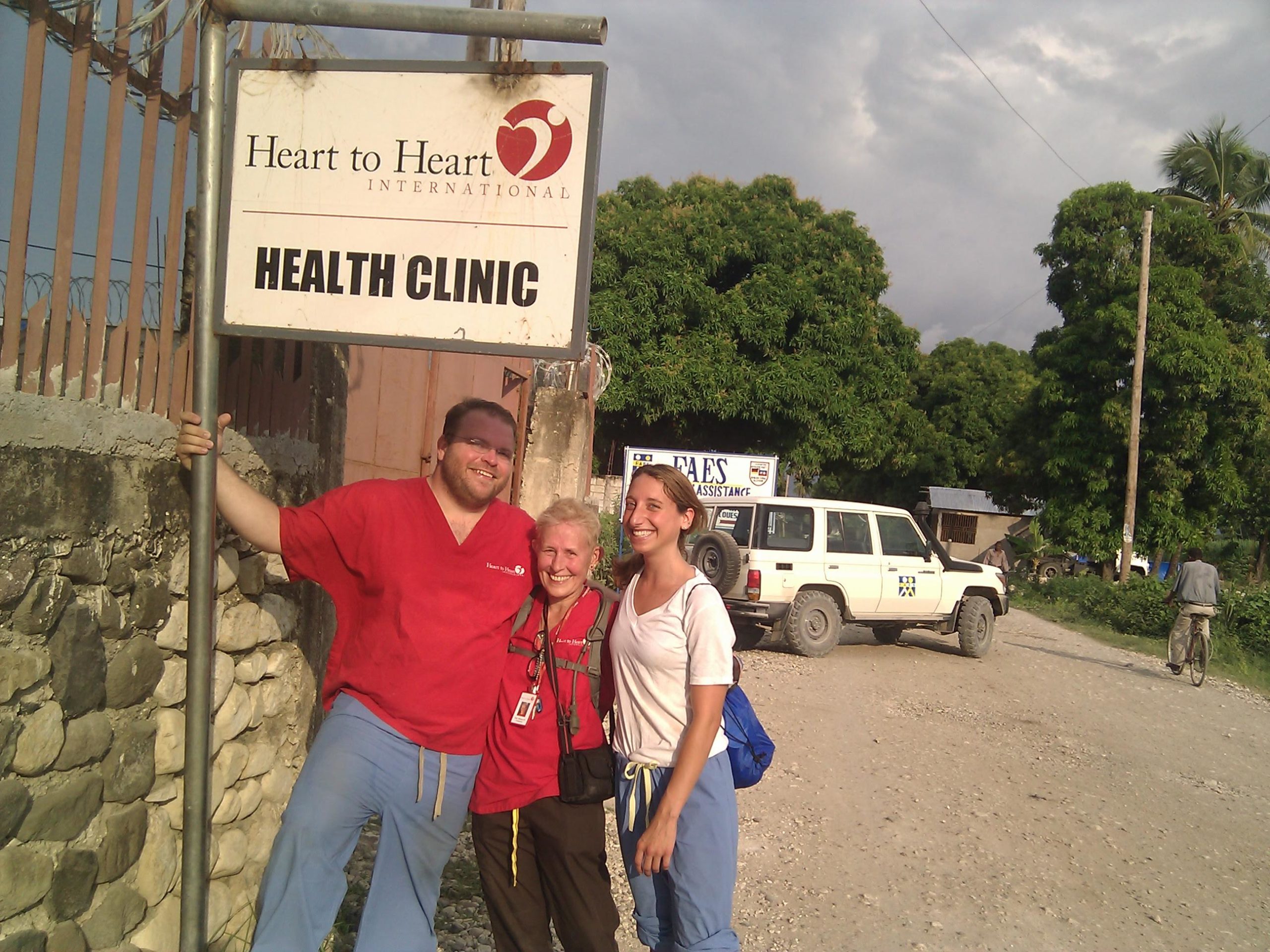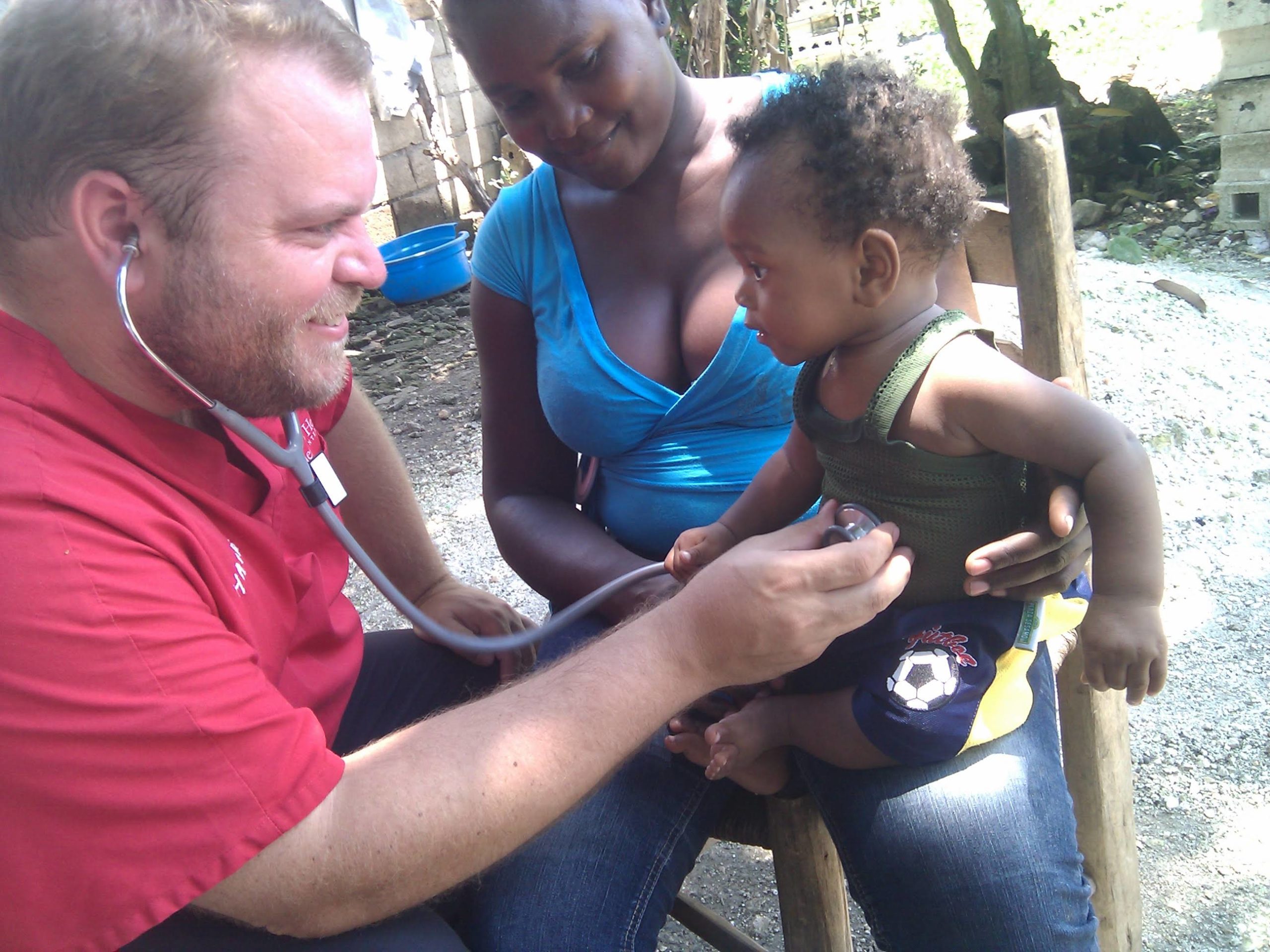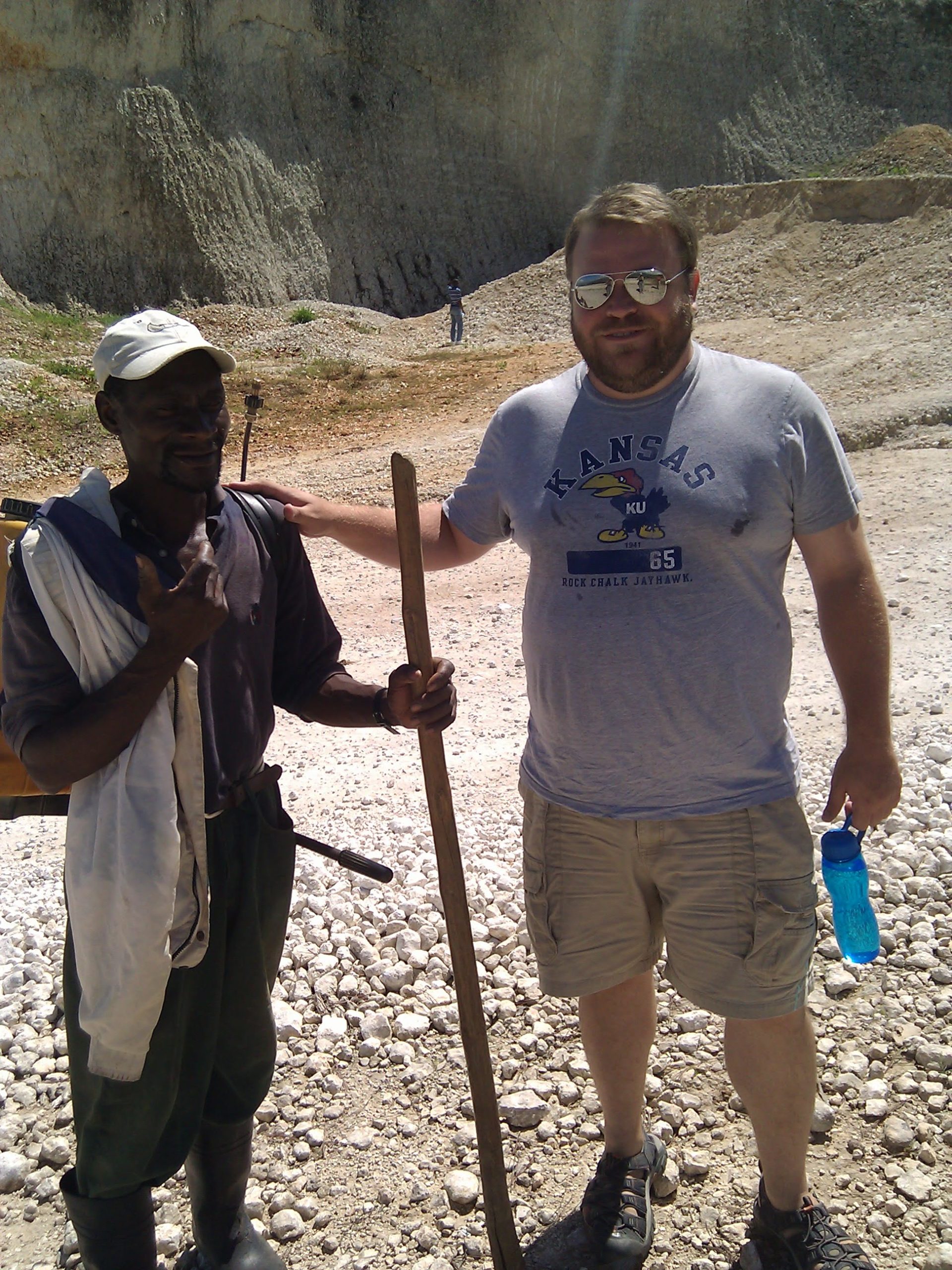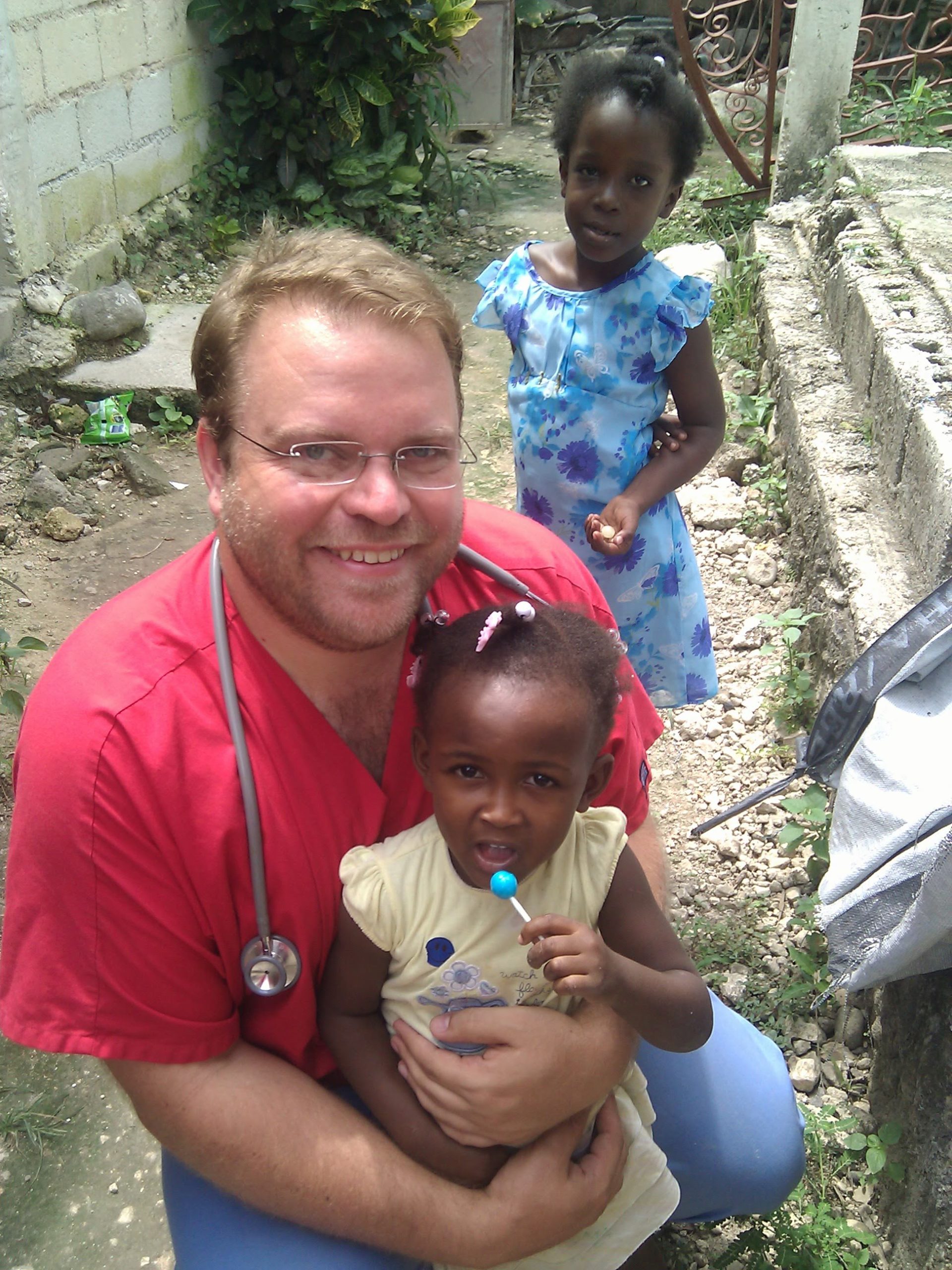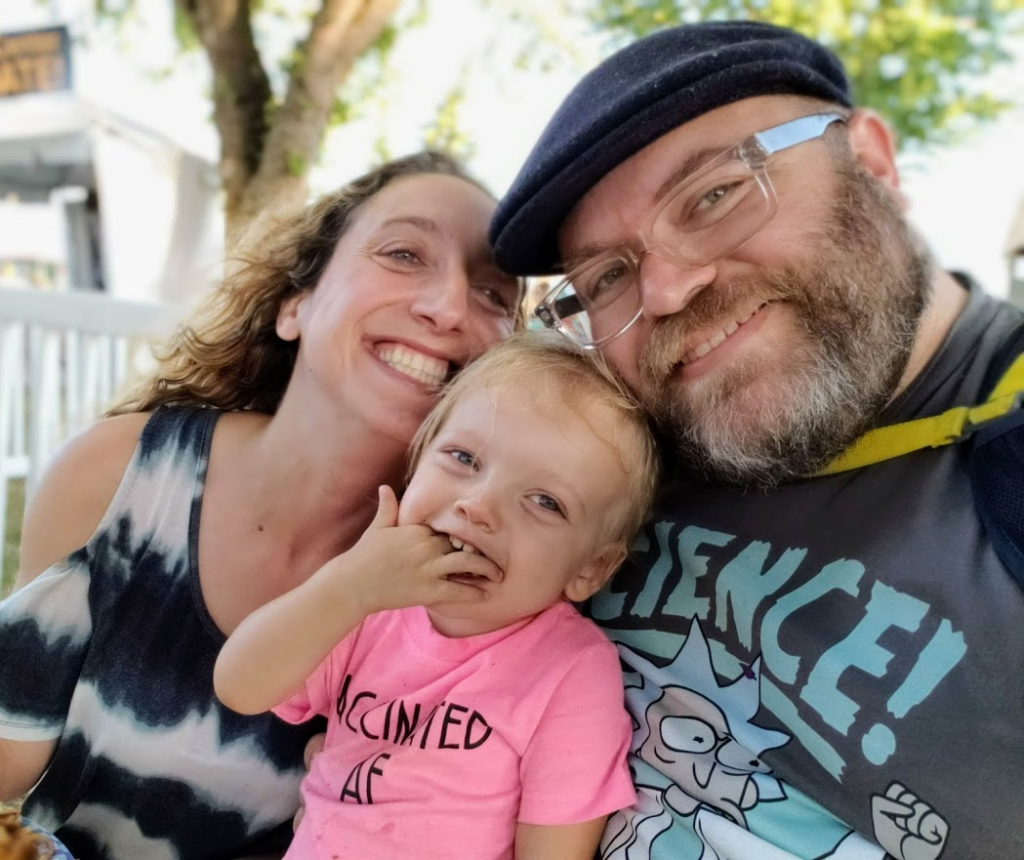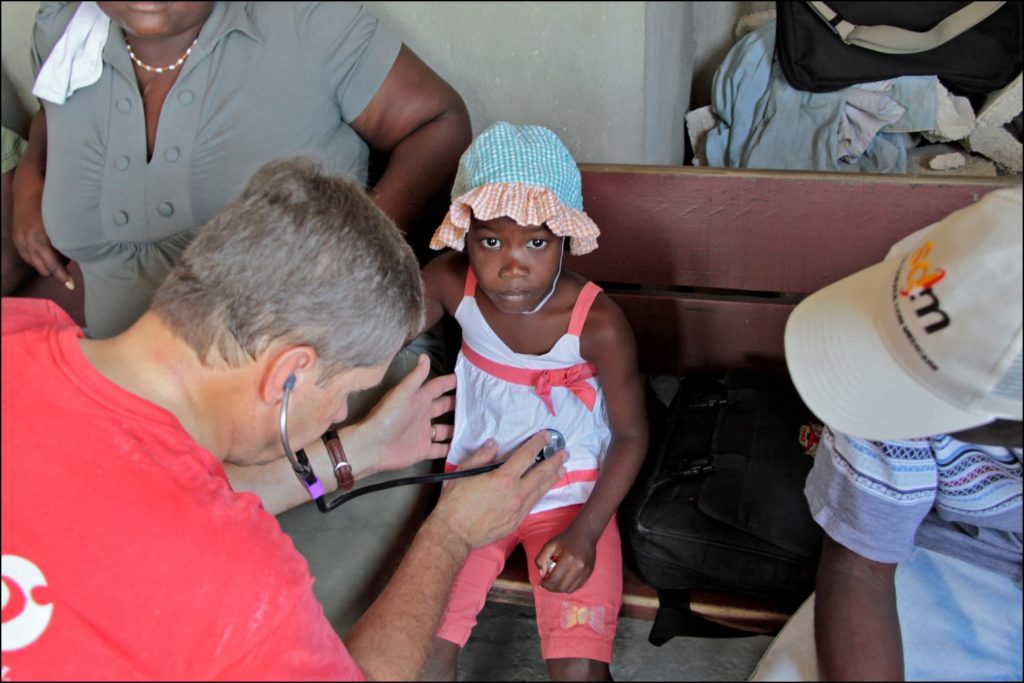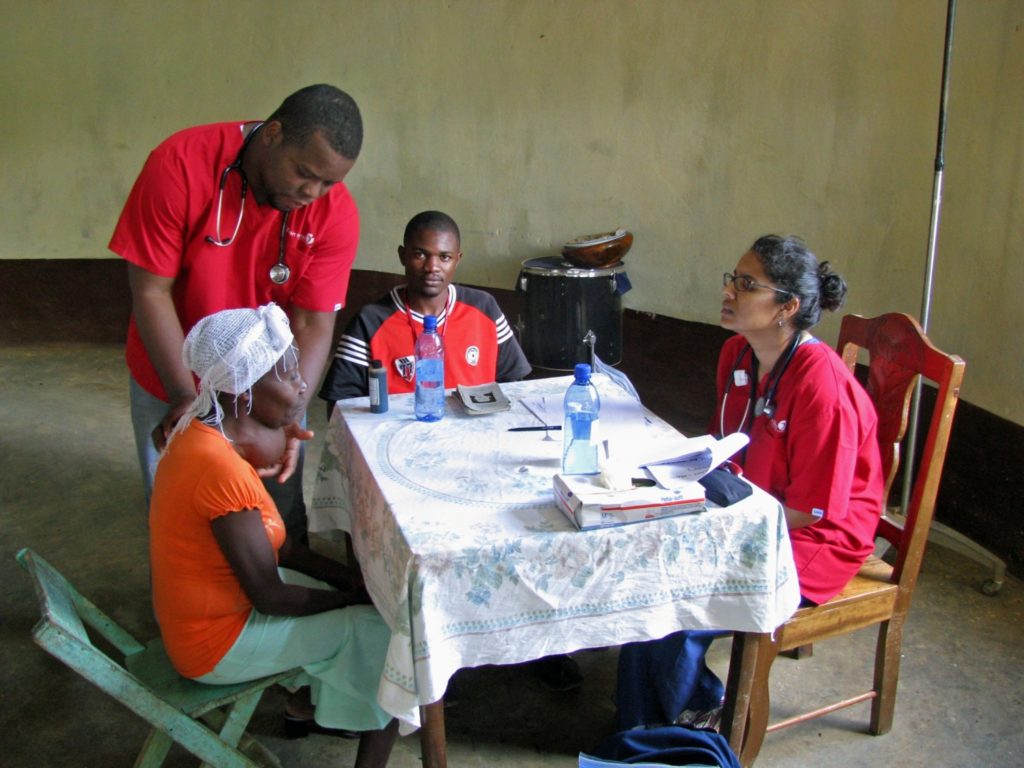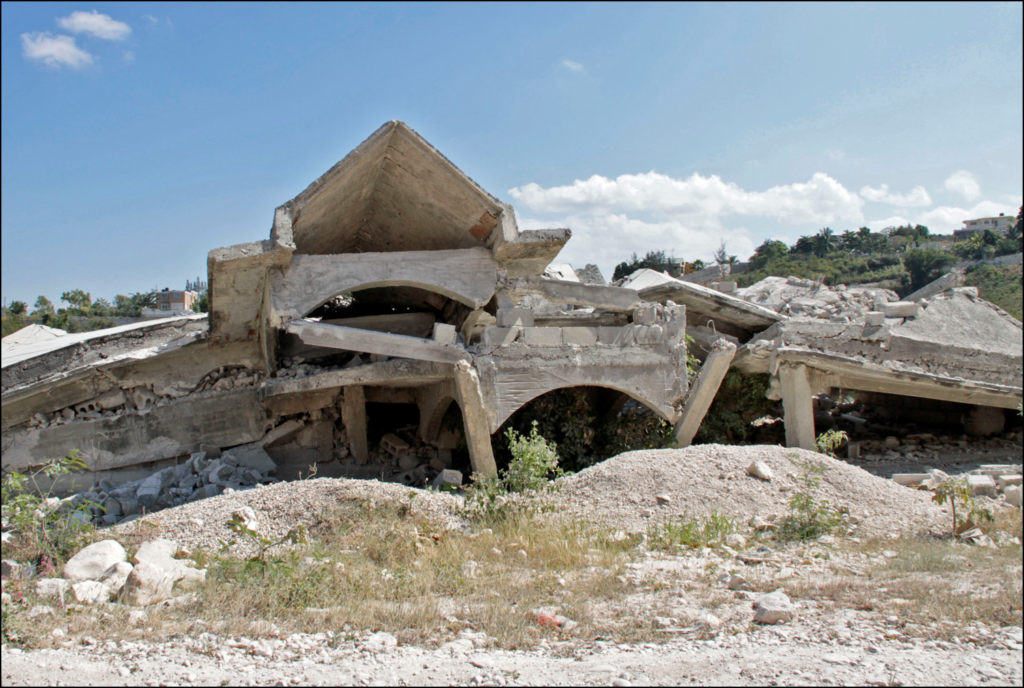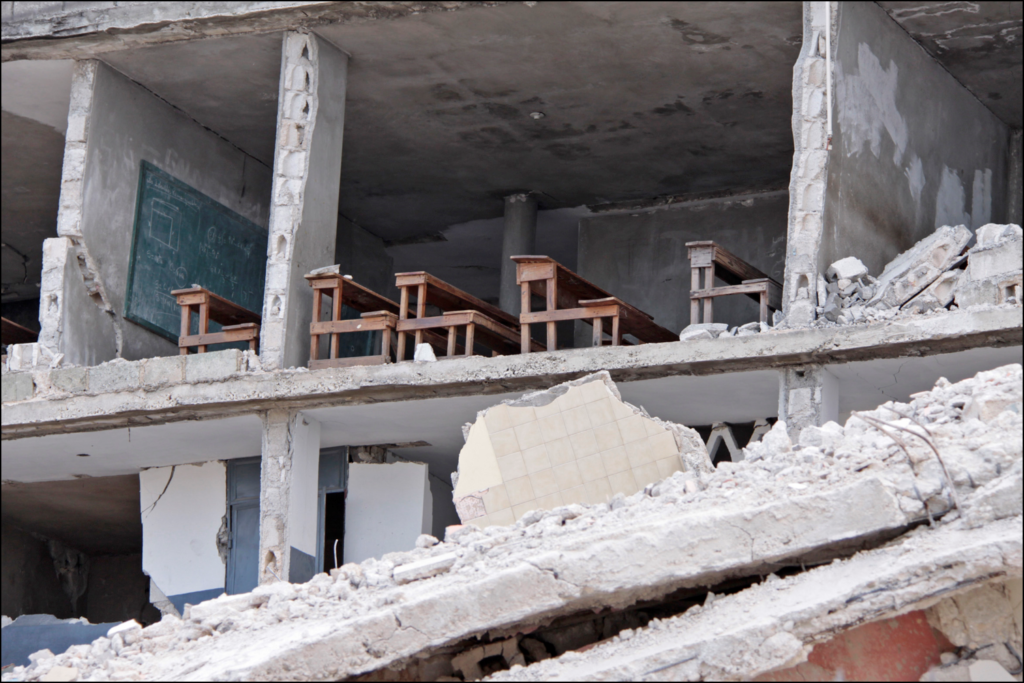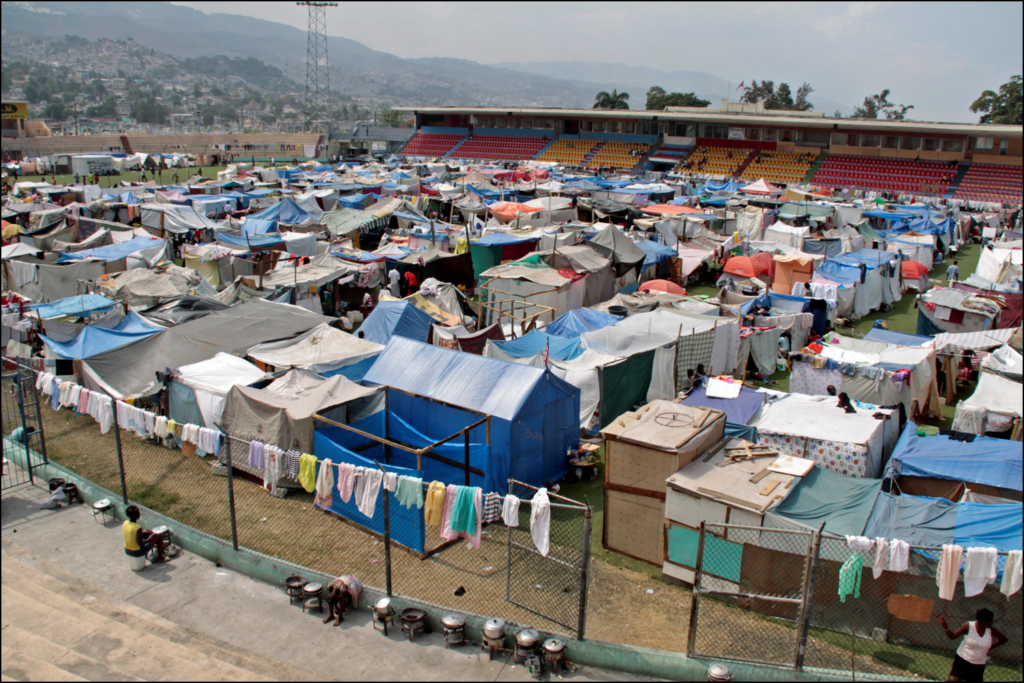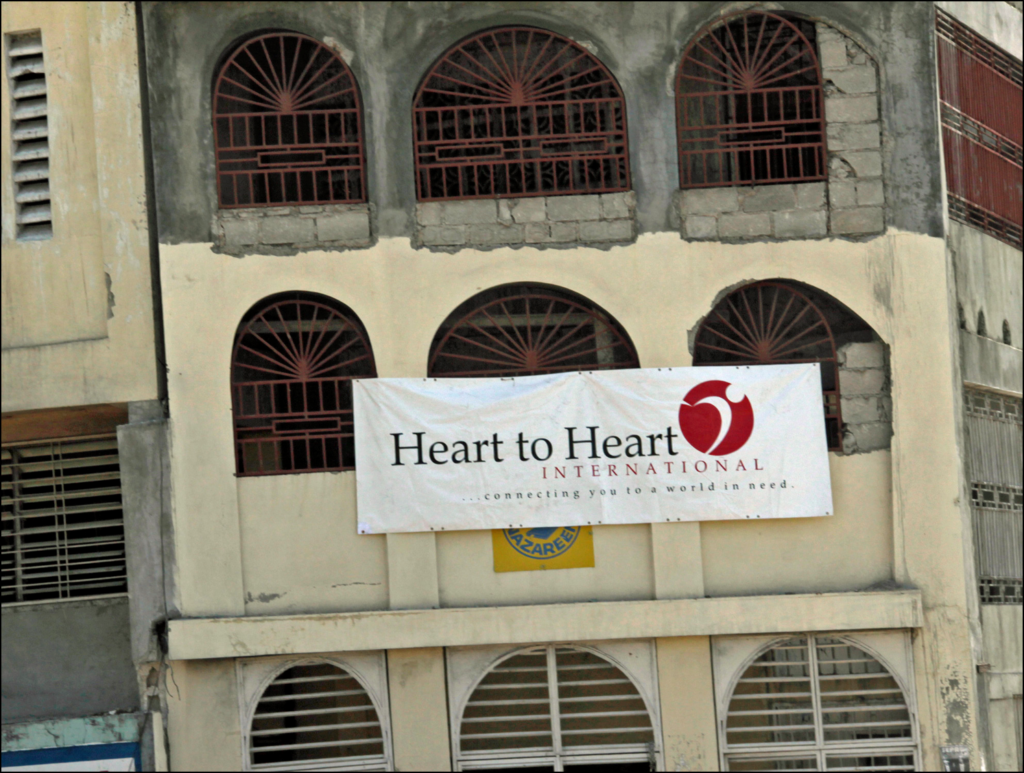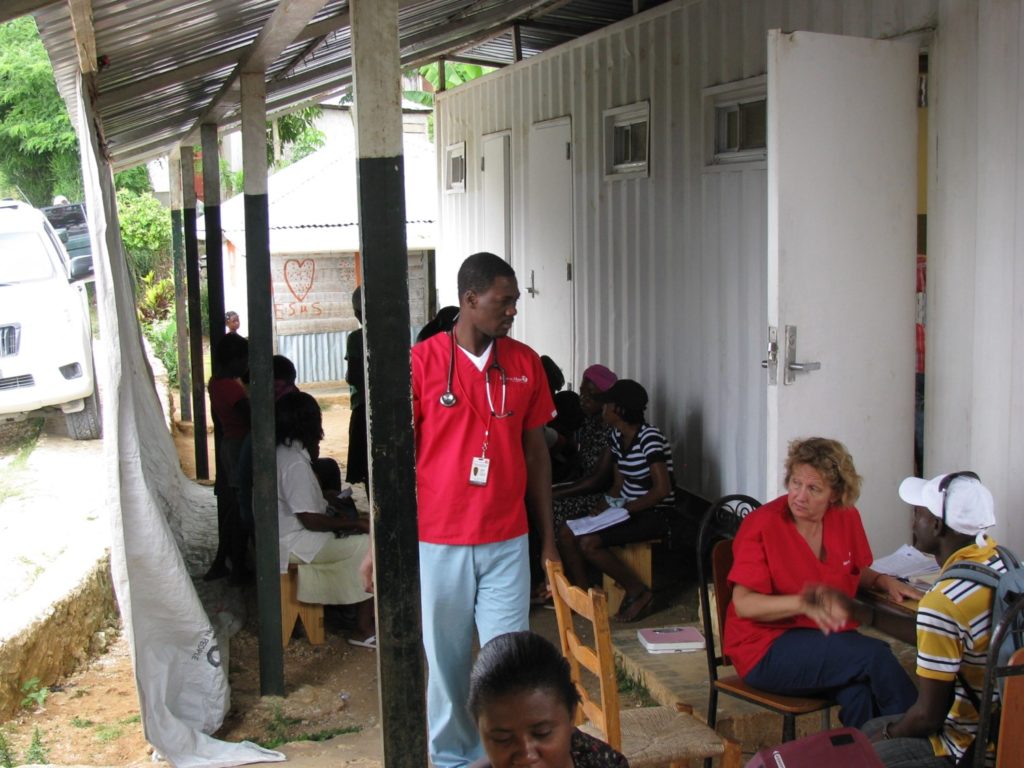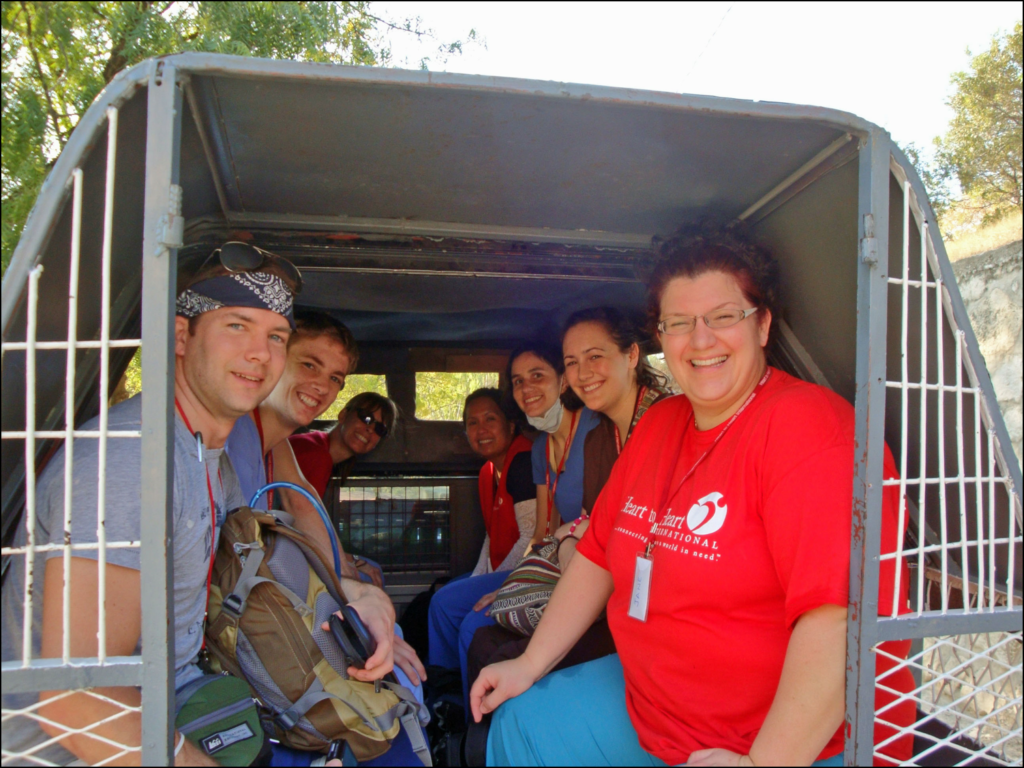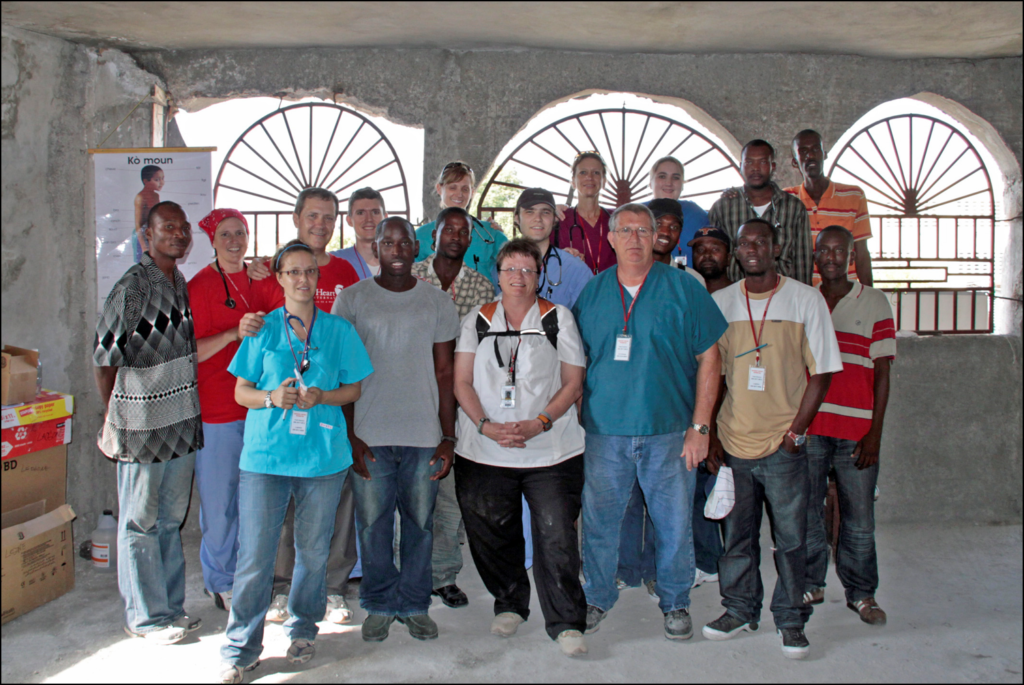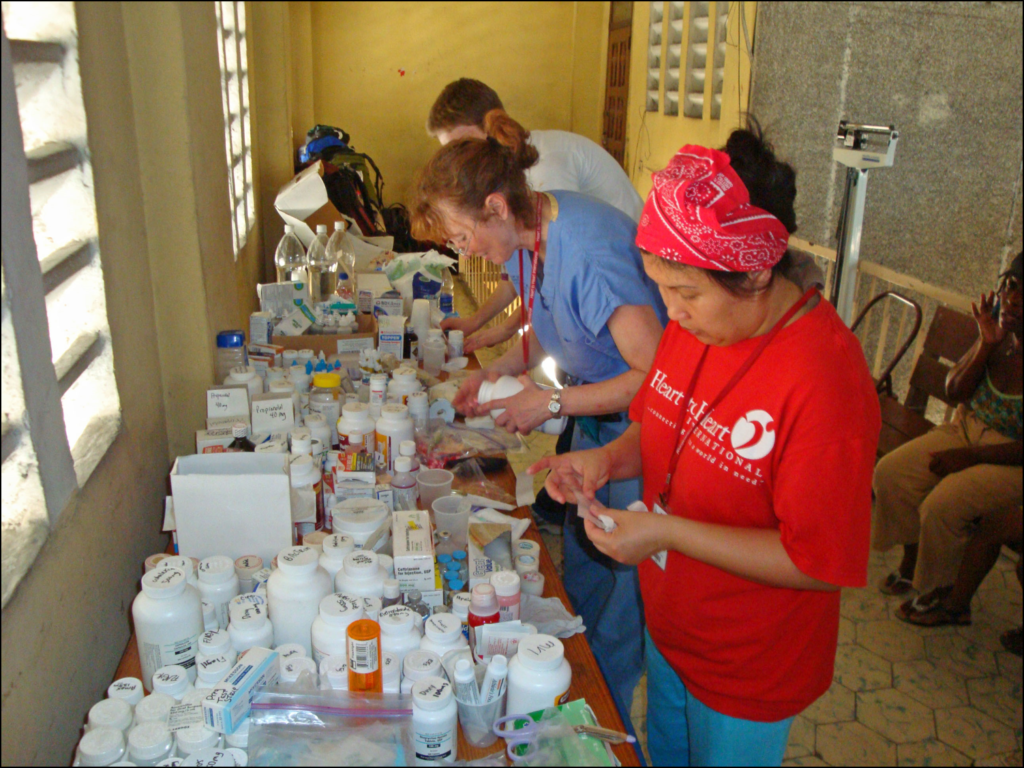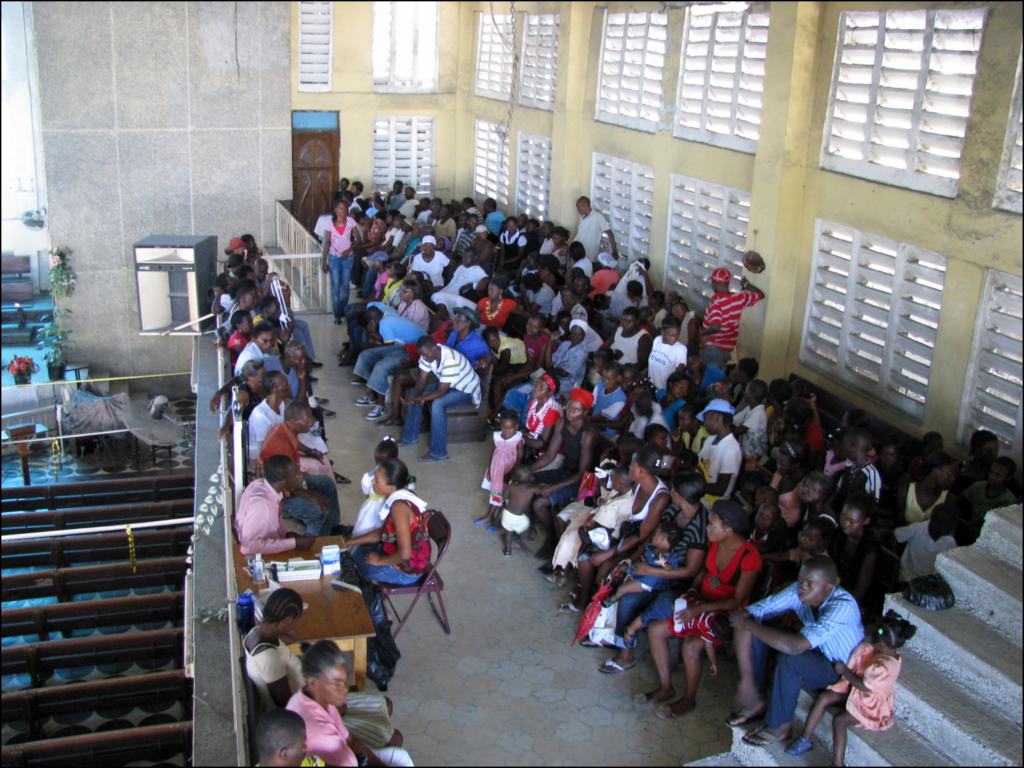When a 7.0 magnitude earthquake rocked Haiti on January 12, 2010, more than 230,000 people were killed and millions were left homeless. Heart to Heart International sent down hundreds of volunteers in 2010 alone, and in February 2010, those HHI medical volunteers delivered care to 10,434 patients.
Here are just a few memories from some of those volunteers:
Bill Kelley –
“It was after dark when I arrived at Heart to Heart’s Maison in Haiti on my first deployment . The trip from the airport was hot, humid, smokey, and dusty. There were very few lights visible during the trip due to limited electricity. I learned that even the use of headlights on vehicles were optional.
During that first night in Haiti I woke up around 3:00 AM and looked out at Heart to Heart’s red front gate. I was sleeping in the men’s dorm and the reality of committing to another 62 nights in a developing nation that was working to recover from a devastating earthquake made it difficult to fall asleep again.
My previous experience with international travel was Mexico, Canada, Europe, and the Tourist areas of the Caribbean. None of my previous destinations looked like Haiti. I was concerned.
The sun did come up the next morning and I met the wonderful Heart to Heart Haitian staff as they arrived for work. They all had smiles on their faces and were well dressed. I would have never guessed that they had slept in tents the night before.
With my job duties, I can’t say that I did not wake again during my remaining nights in Haiti. However, I loved serving with Heart to Heart, the people of Haiti, and the many volunteers like myself, who would not forget their time in Haiti.
Rick Randolph MD –
“I was working in a very makeshift clinic site in the city of Leogane in the first weeks after the 2010 Haitian earthquake. Leogane was adjacent to the epicenter of the earthquake and was very severely damaged with great loss of life and many injured. Most of the deaths and injuries were due to collapsing buildings and landslides. Our ‘clinic’ was located under a tarp in an open soccer field because no one wanted to be in a building with the frequent aftershocks.
One patient was a lady who appeared to be in her 40s who complained of ‘heart pain’. I first asked questions to determine if she was at risk of a heart attack. Her answers didn’t raise any concerns for her heart. In fact, they didn’t point to her heart at all. In other cultures, pain is often attributed to an organ system so I expanded the scope of my questions and asked her about what happened to her during the earthquake.
She said that she had been helping her two sons with their homework. Once they had finished one part of the homework, she sent them back into their house to get another assignment. That is when the earthquake occurred, collapsing her house and killing her sons. So I realized that she did indeed have heart pain. Her heart was broken. And all I could do for her was to hold her hand and pray with her. I couldn’t fix her broken heart, but at least I could offer a small measure of comfort. I cried again when I returned to my tent at the end of the day. “
Wes Comfort –
“The only things I knew about Haiti revolved around poverty and disasters prior to my arrival in 2010, and over the last 10 years I have seen daily examples of resiliency, pride, and hope in the people of Haiti.
The earthquake in 2010 brought international attention to the needs of Haiti, many of which existed prior to the earthquake.
Through my years in Haiti, working with community leaders, I almost never hear requests for hand outs or “free tickets” but am always asked for the tools and training required to better their local communities – whether that be through health care, education, or local economic stimulation.
Haiti is a beautiful country with a strong and beautiful people and culture, I am so grateful I have been able to spend so much time in Haiti since 2010.”
Rick Moberly II MD –
“The devastation I experienced immediately following the quake was the worst disaster situation that I have ever seen in my entire global health career.
The Haitians’ resiliency and ability to bounce back from such devastation was incredibly inspiring to me and helped to shape my career in global health.
I met my wife, Talia Buchsbaum, during my time in Haiti and we now have a 2-year-old daughter, Zora, together. So out of my experiences, with HHI, my life has changed in a direction that I was unable to anticipate.
I am incredibly grateful to HHI for the hard work that they did in Haiti. “
Dr. Duane Spaulding –
“Dr. Duane Spaulding, at home in Colorado Springs, saw the breaking news about the Haiti Earthquake on the Internet within an hour of the event… and sensed it would soon have a LIFE-CHANGING IMPACT in his own life… but he had NO IDEA just HOW life-changing it would actually become! This still remains the WORST catastrophe – in terms of lives lost – to strike a SINGLE nation of the world in the modern era…
We had Haitians on our HHI-Haiti team who were left with “Survivors’ Guilt” having seen others crushed to death while they themselves were a couple of car-lengths away and suffered no physical injuries…
Most school buildings are used for up to 3 separate sessions of students daily. At 4:53 PM Haitian teenagers where still in their middle or high school classes when the Earthquake struck. 1.6 MILLION people were in makeshift “IDP Camps” (Internally-Displaced Persons Camps) leaving them vulnerable to the weather elements AND to the maruading gangs that quickly moved in to make life even more daunting… and by the last available report by the UN’s IOM (International Organization for Migration) on 15 April 2018, there were 37,546 persons still categorized as living in these camps…
Soon after the HHI Assessment Team had arrived (actually within 48 hours of the catastrophic Earthquake), our first HHI-Haiti Medical Teams began working in Mobile Clinics in several areas including this Football (soccer) Stadium in downtown Port-au-Prince.
Consider the fact that the perimeter gates were LOCKED SHUT for security purposes for 12 hours every night… however, there were NO latrines available inside the fences for these hundreds of families during those overnight hours. Quite predictably, the sweltering daytime heat (always in the 92-96 degrees Fahrenheit range) made the odors almost unbearable for those HHI-Haiti medical teams who served there.
DRS was deployed to Haiti by HHI arriving on the one-month anniversary (as ALL 9 expat MDs departed HHI/Haiti that morning!), leaving DRS (as a novice in Disaster Zones) in country along with an ICU Nurse, a Paramedic, an EMT, and a Family Practice Resident Doc as our “expat medical team”. Three days later we launched this clinic in the BelAir church that was still standing and safe to occupy in downtown Port-au-Prince. After working literally night and day for 14 days and drawing on at least 25 different skillsets gained over a lifetime – DRS’ sensed that he was meant to be in Haiti “for such a time as this” – which blessed him beyond words! And before departing Haiti at the end of those 14 days, HHI Founder, Dr. Gary Morsch, came back to Haiti and asked DRS to consider becoming HHI-Haiti’s Medical Director.
As we assembled an AMAZING team of Haitians and Americans EVERY WEEK to meet the needs of the hundreds of patients seeking our care including not only expat medical professionals but also local Haitian pastors, translators, security officers, et al., MANY of whom remain friends TO THIS DAY! For example, in the short month of February 2010, HHI-Haiti Medical Teams like this delivered care to a sum total of 10,434 patients!
As most patients – with proper medical care to facilitate the process – gradually healed from their Physical wounds. Although healing the Psychological aspects of the trauma required an entirely different approach. As many as 100+ patients were referred by our Medical Providers after which they would be professionally screened for PTSD, etc. and, when appropriate, would be invited to gather twice weekly in an upper room above our clinic for group counseling, encouragement, prayer support, and the opportunity for networking among former neighbors who had been dispersed far and wide by the Earthquake.
Certainly DRS’ heart is overflowing with appreciation to Heart to Heart International for providing the opportunity to serve, but also looking towards the future and “What comes next?” for HHI-Haiti and the wonderful people of Haiti… “
Dr. Jeffrey Alpert –
-
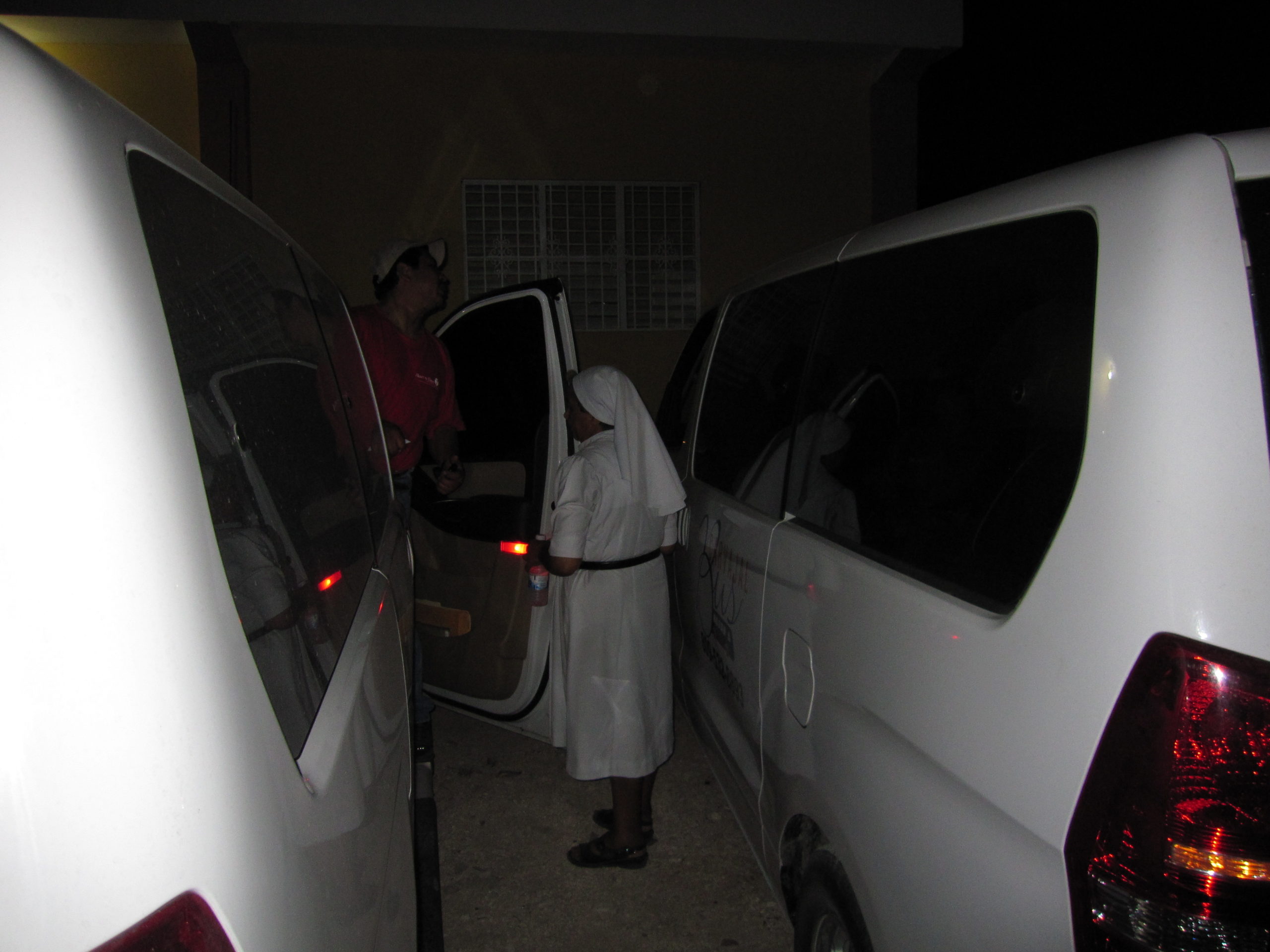
The nun at the DR border -
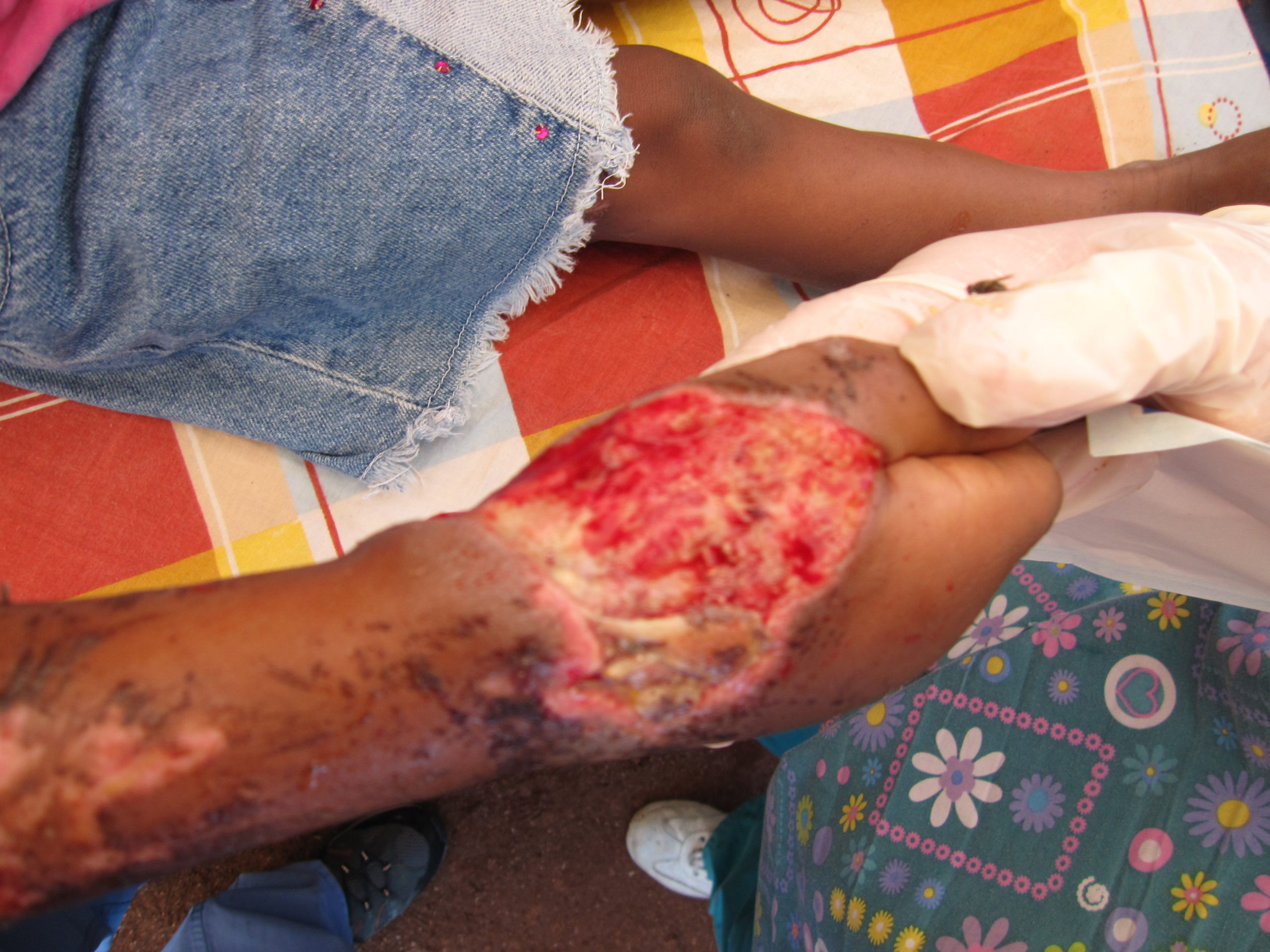
A child’s hand. At the stadium in Port -
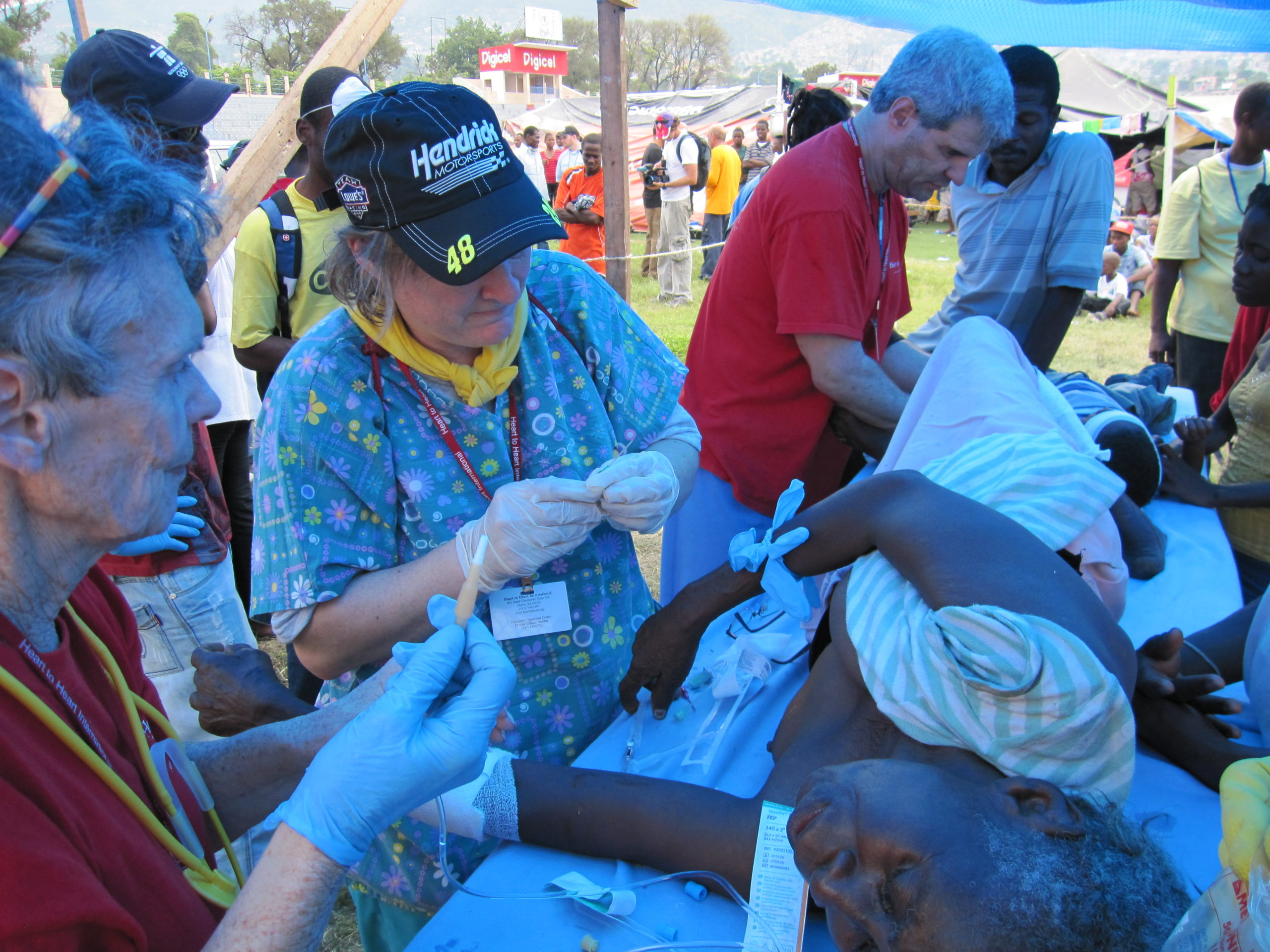
A lady with tetanus -
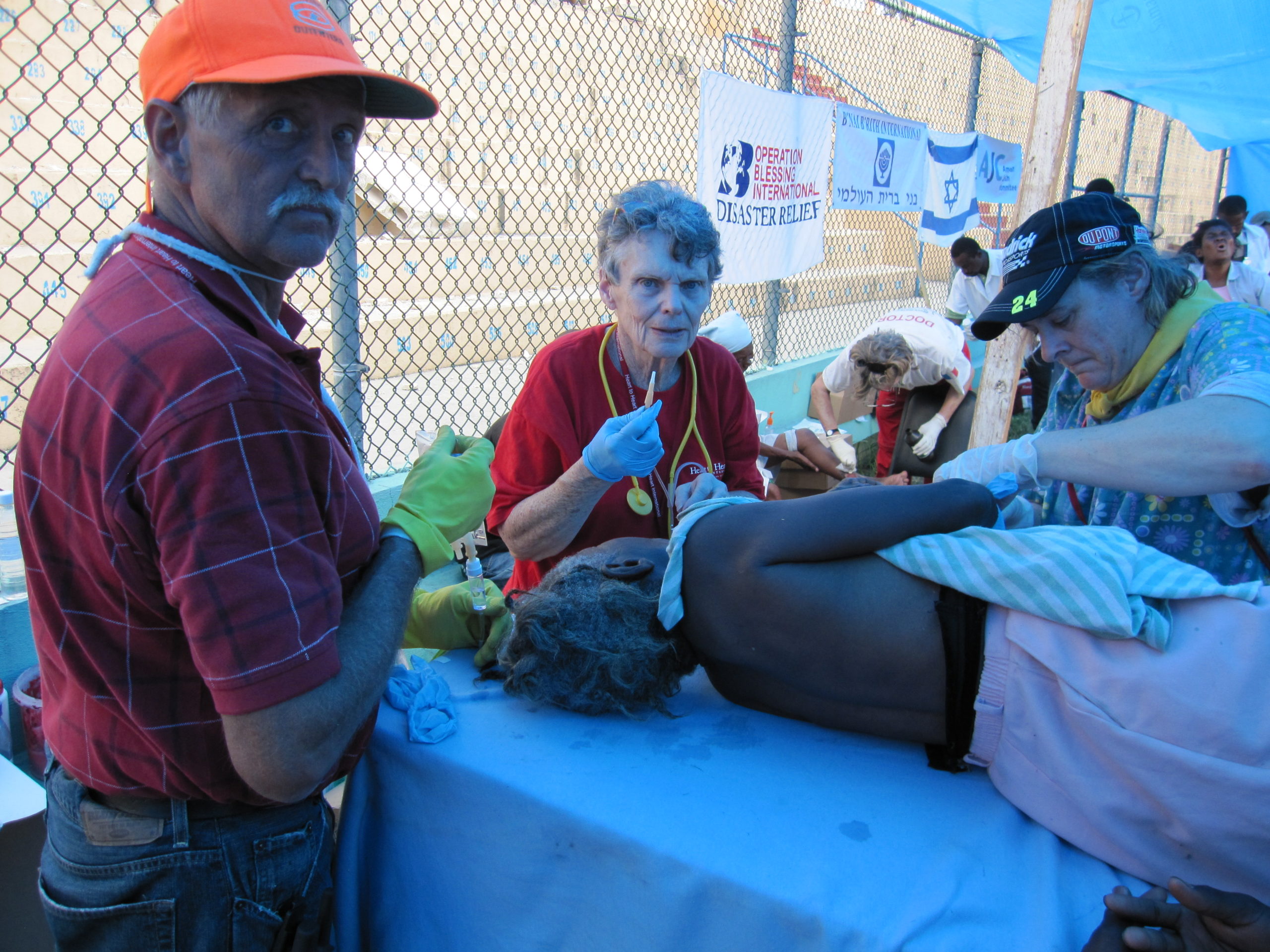
Tetanus patient -
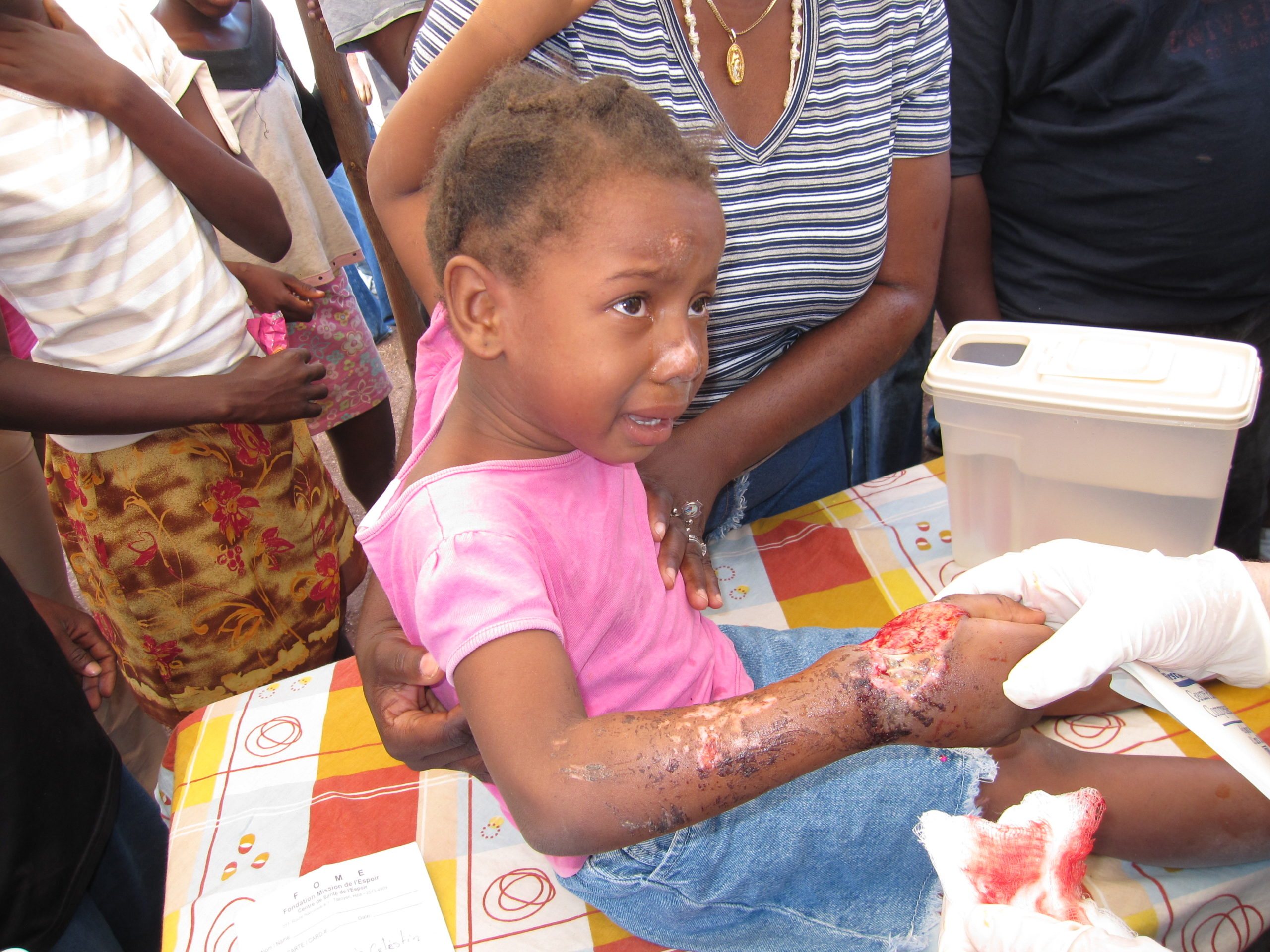
Not untypical wound in young girl- at the National Stadium -
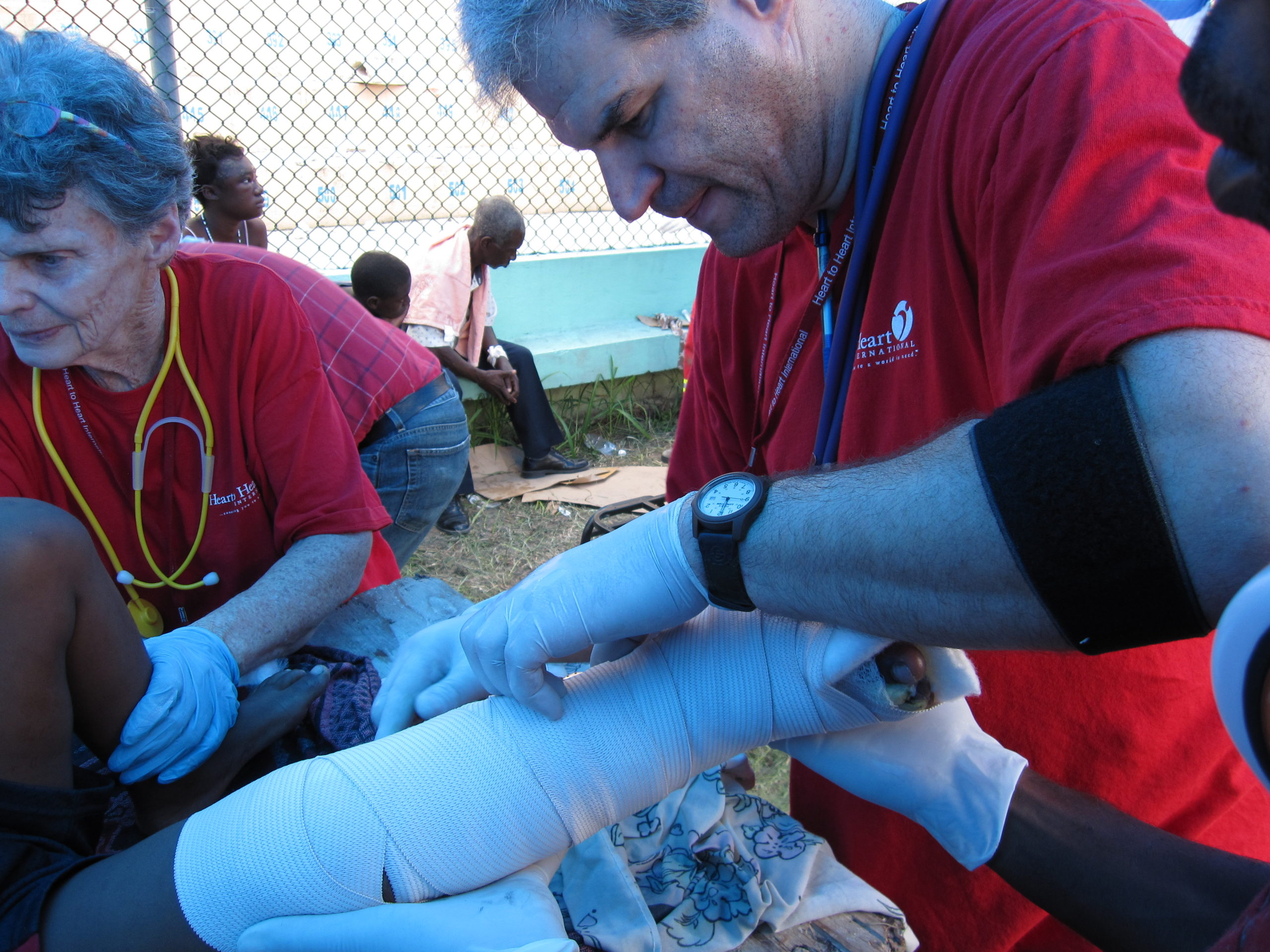
-
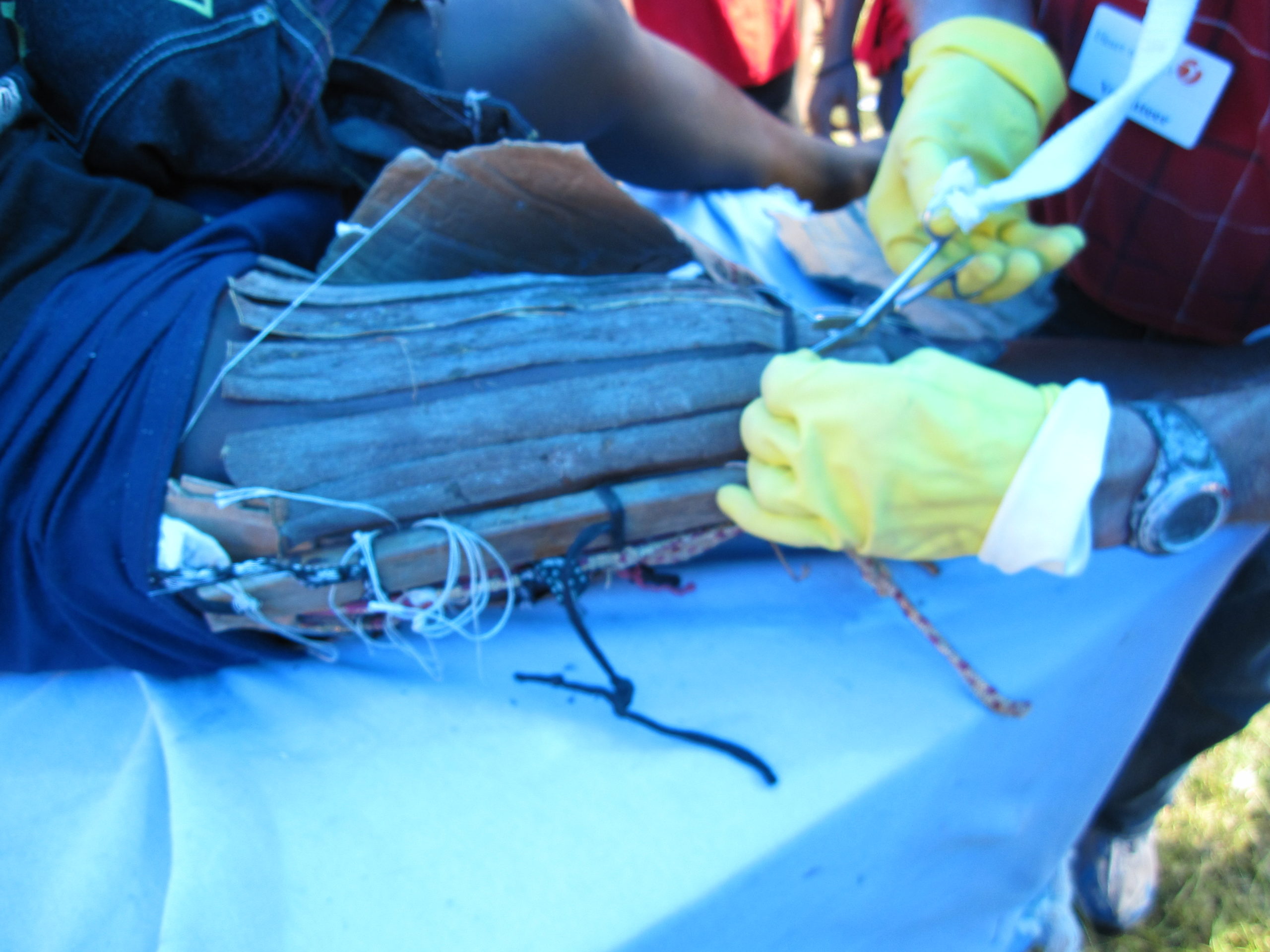
An impressive home made splint -
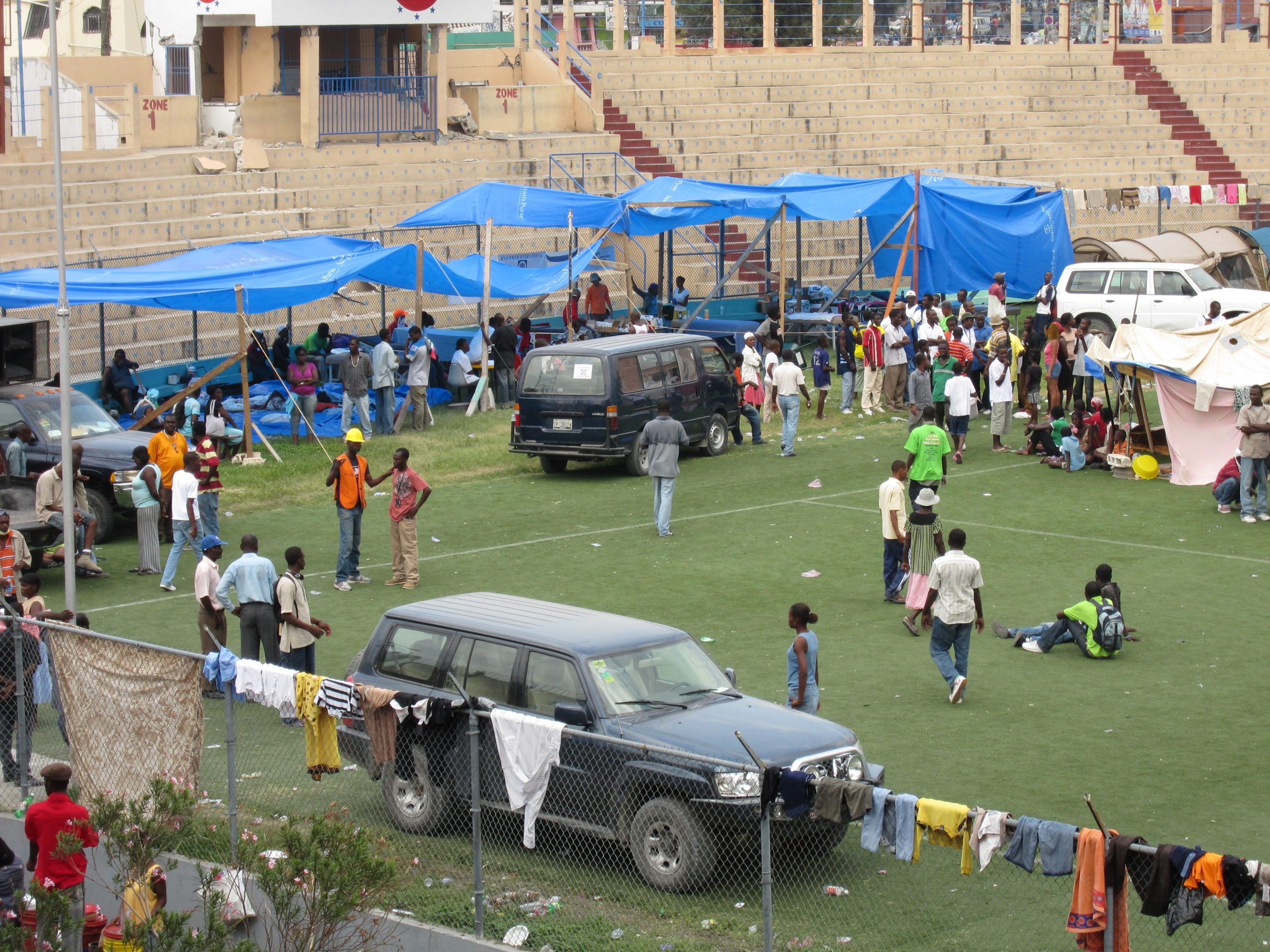
The clinics at the National Stadium -
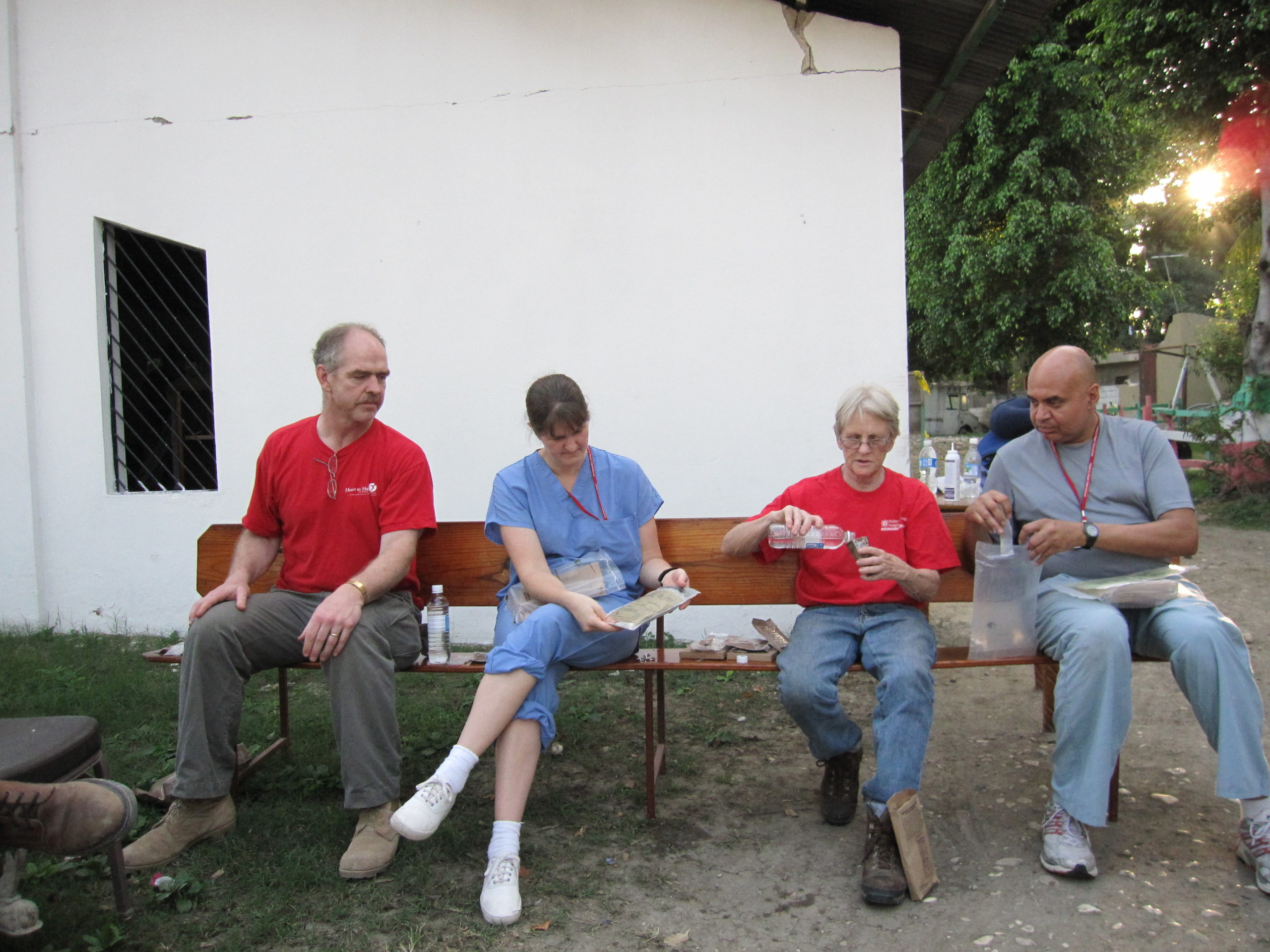
Enjoying our MREs in Leogane -
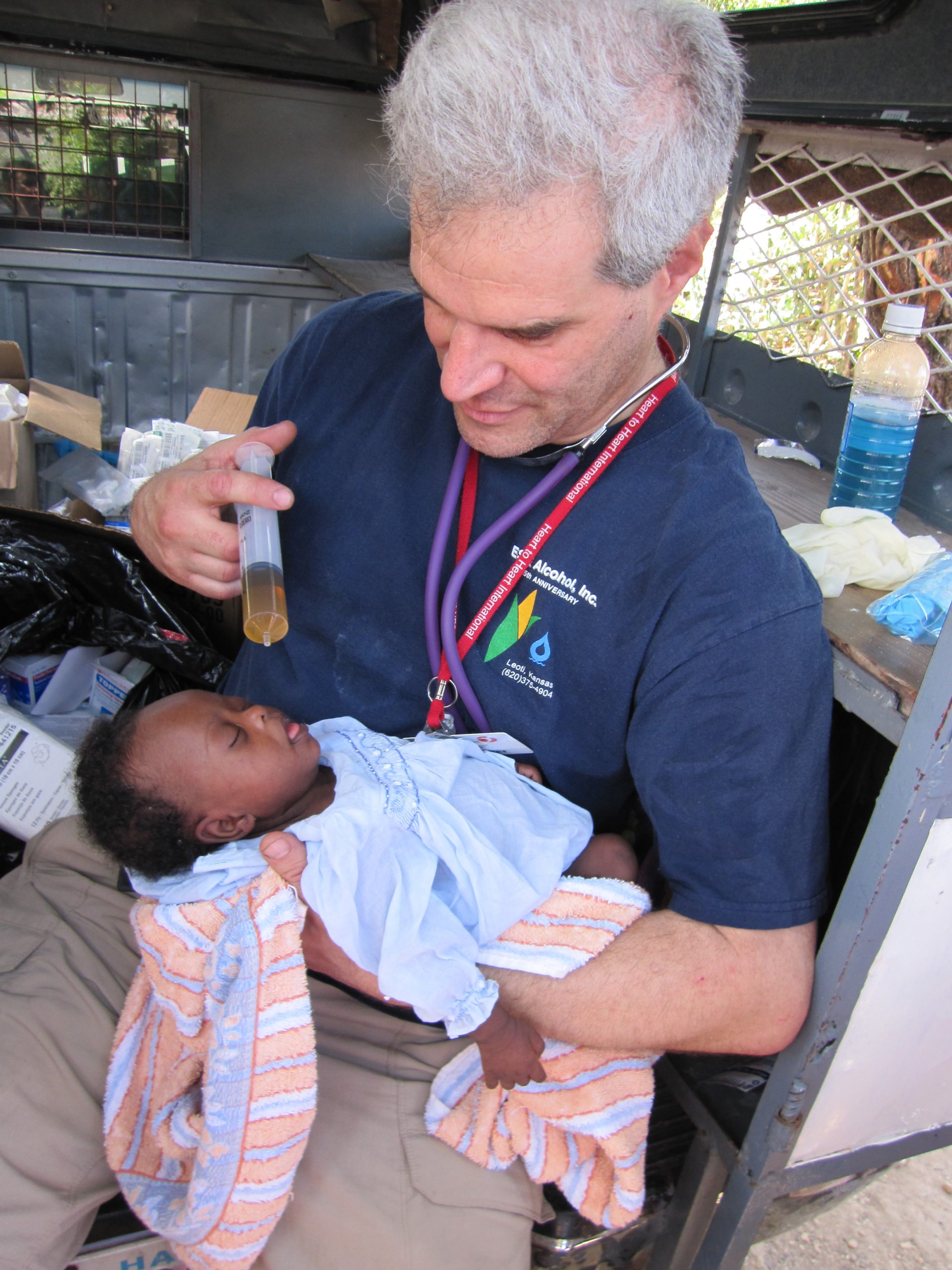
Giving makeshift ORS to a baby (I had rehydration tablets that I usually use when cycling) -
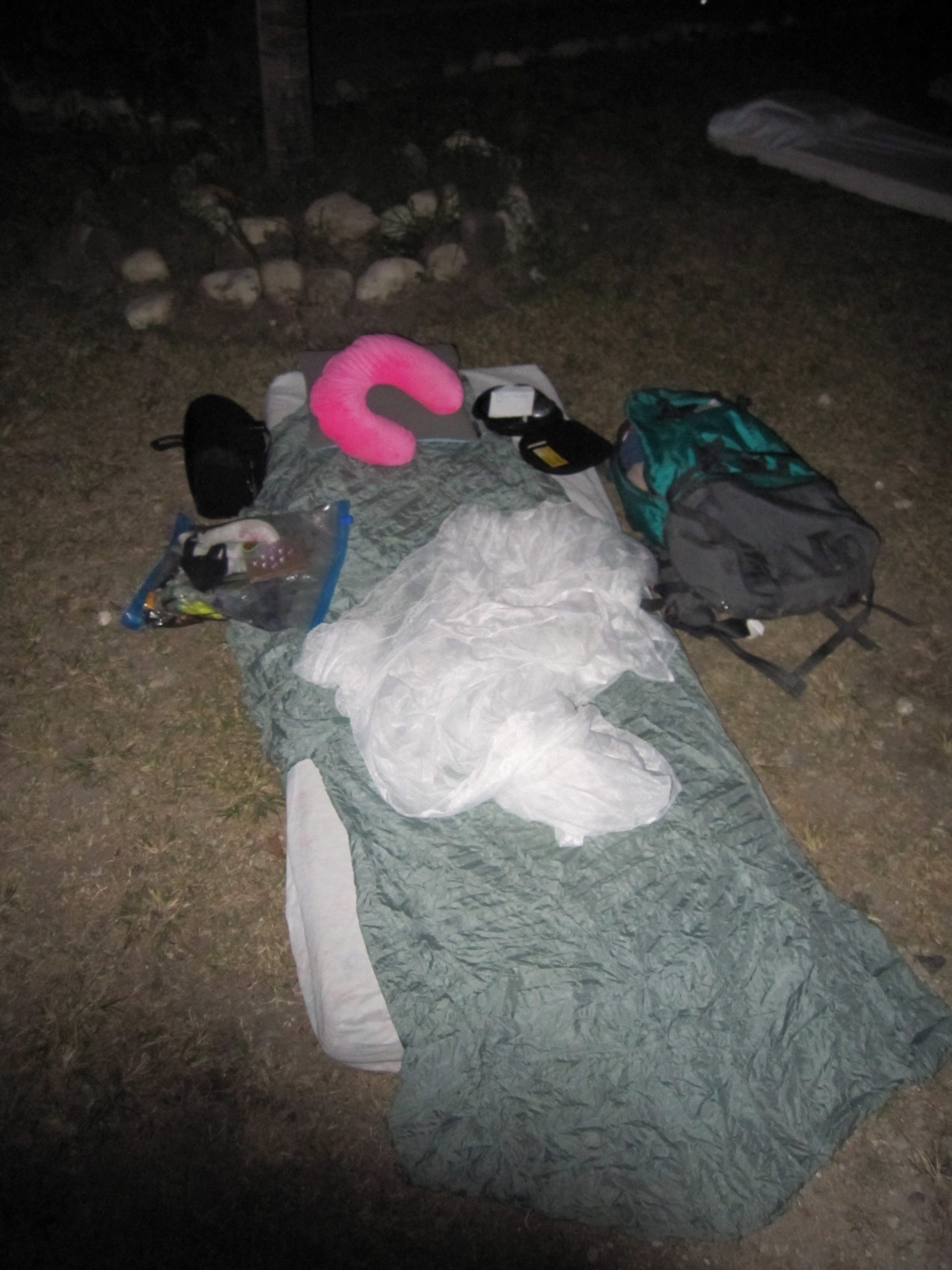
My bed at the Mennonite compound that was our home in Leogane -
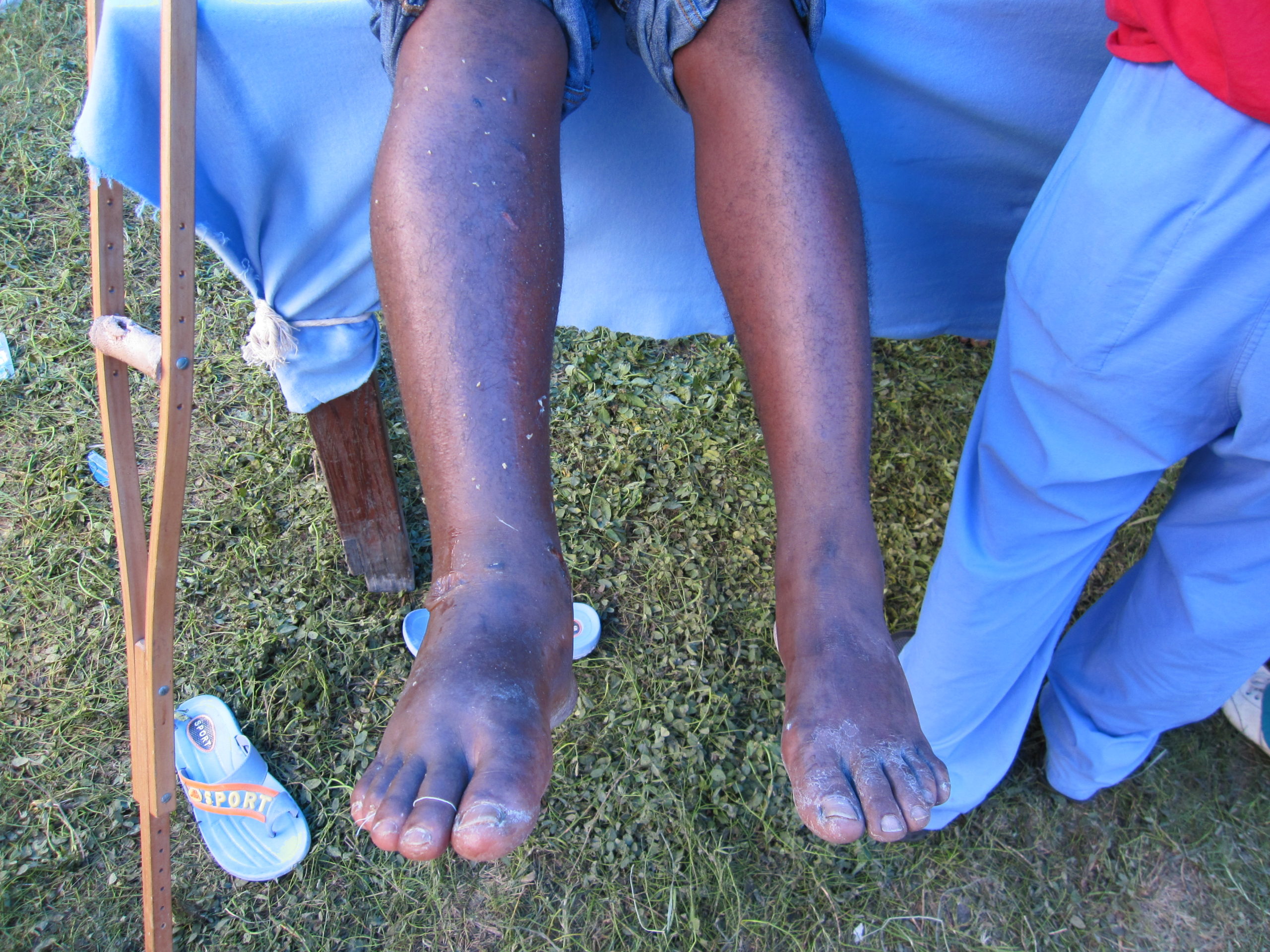
Right leg compartment syndrome- He’ll need an amputation -
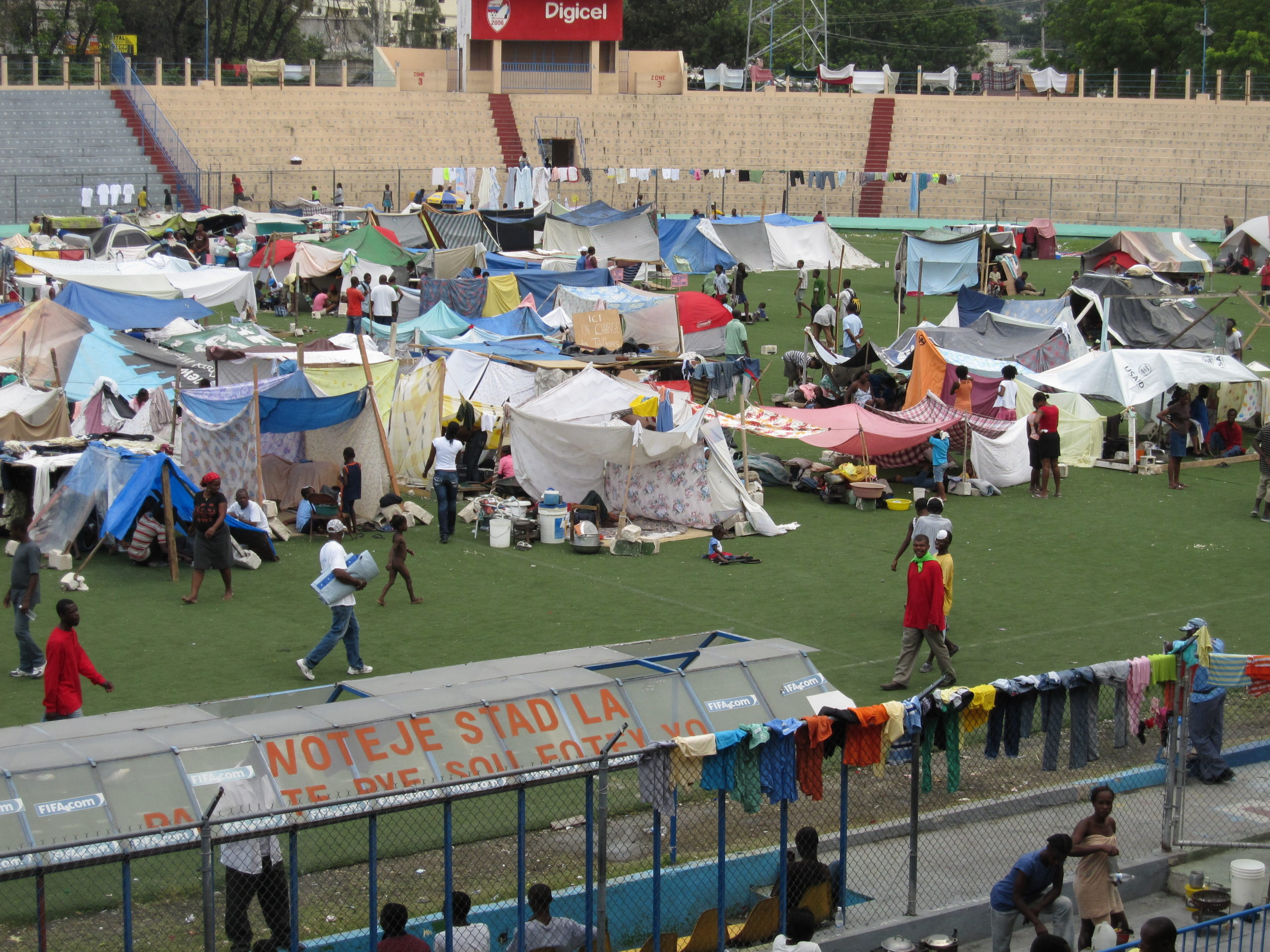
The clinics at the National Stadium -
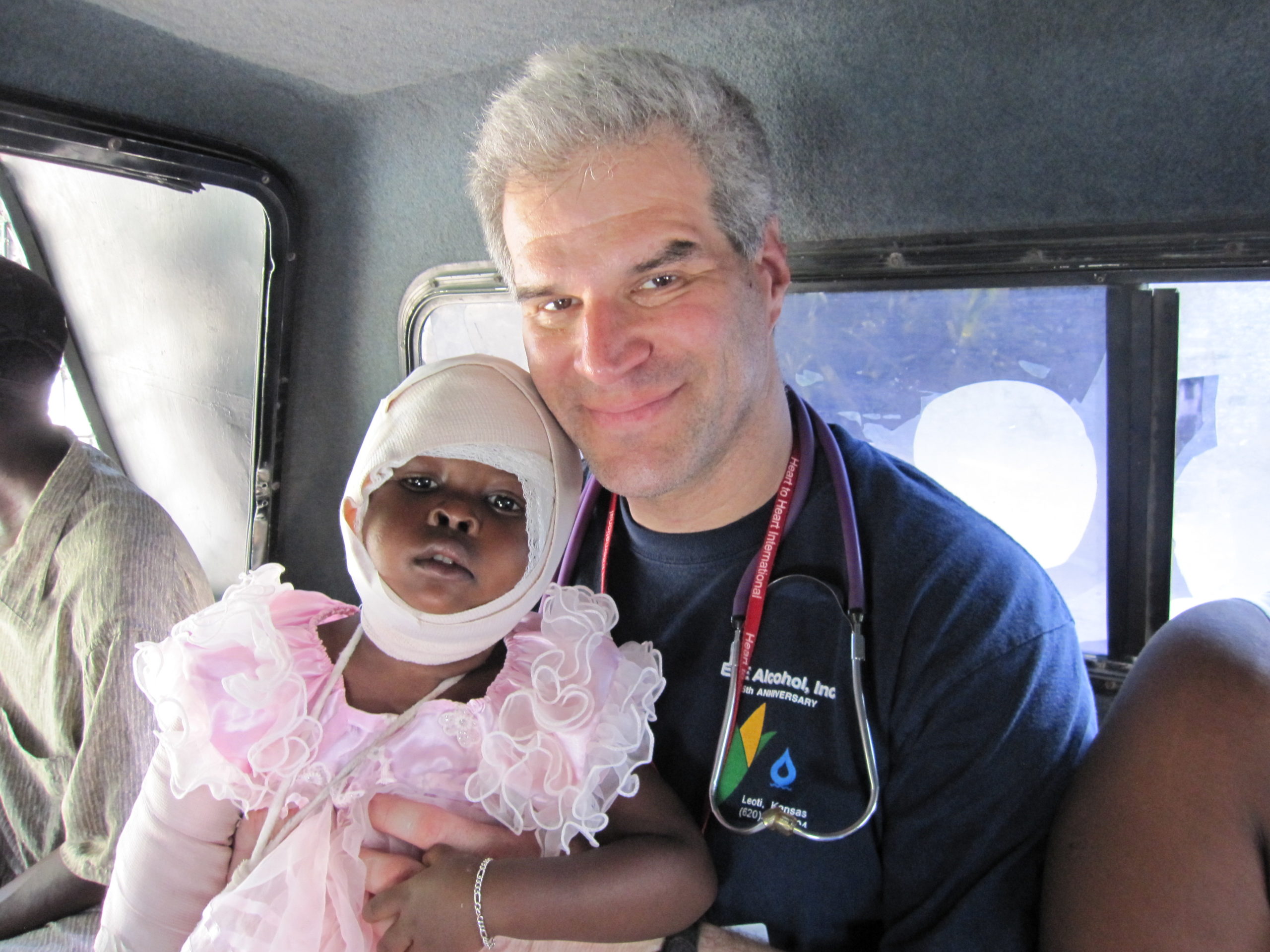
Shakina and me -
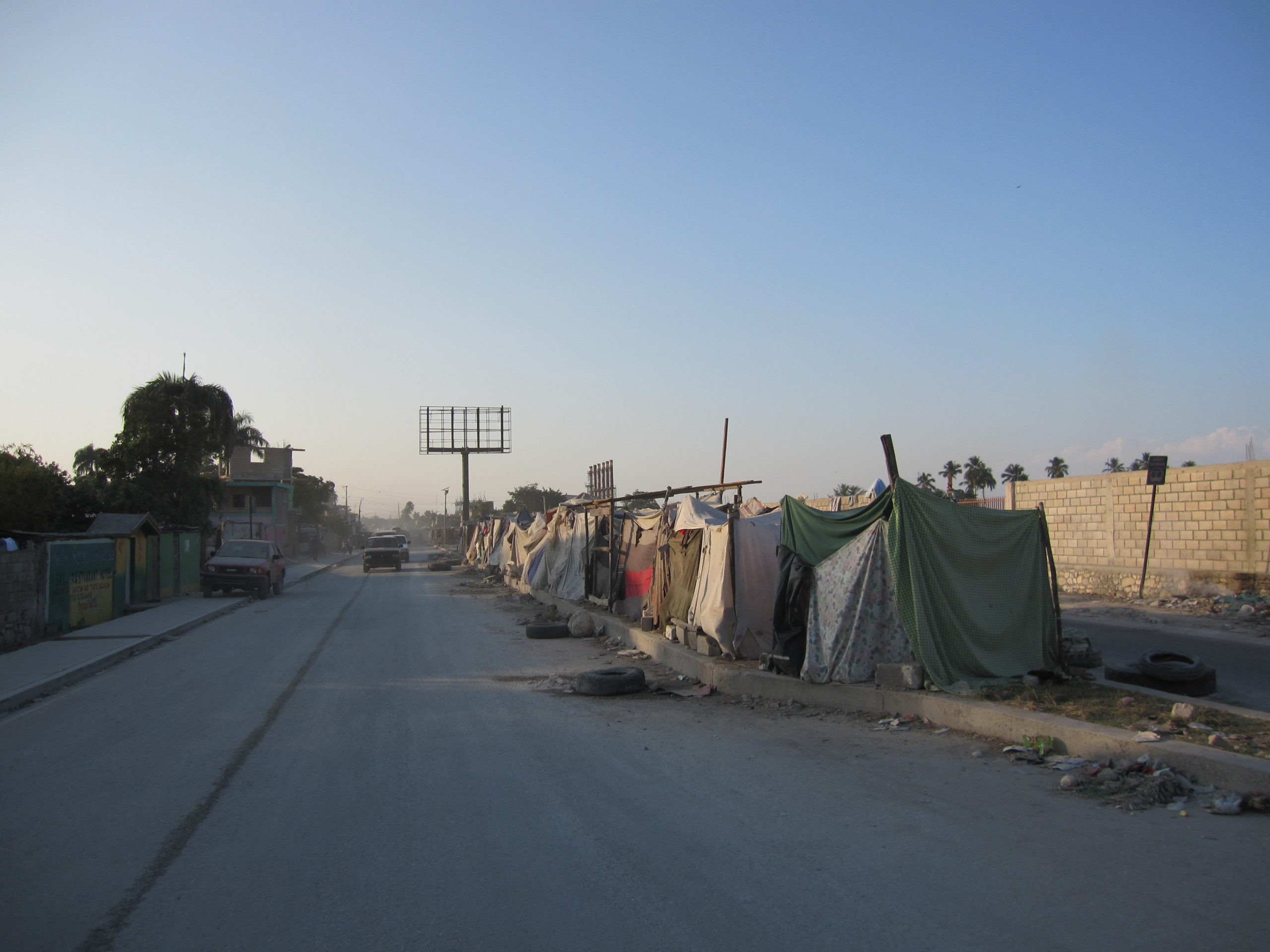
The tent city located on the median of the major road between Port au Prince and Leogane

